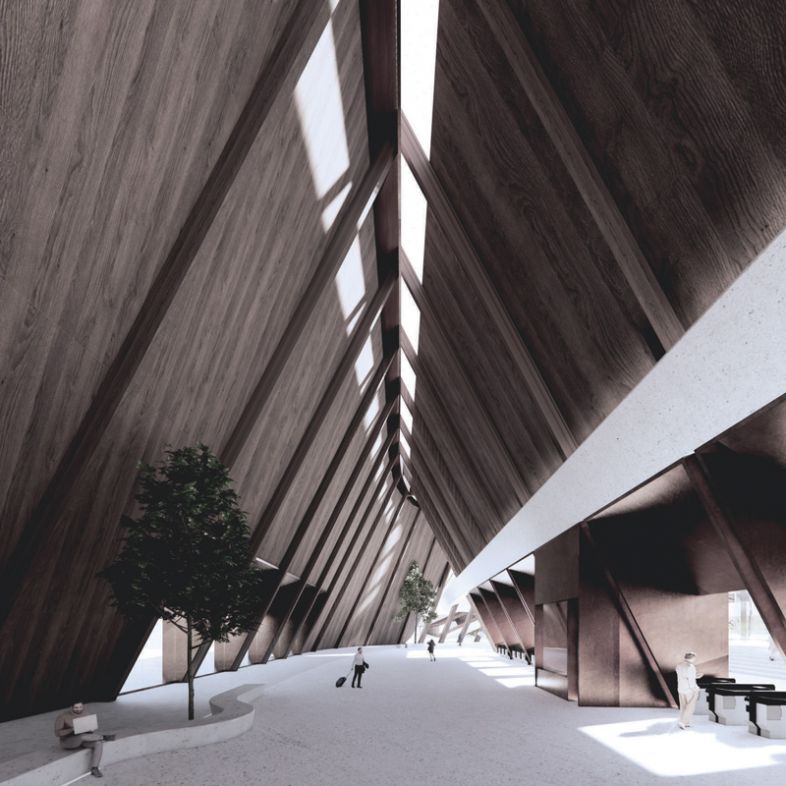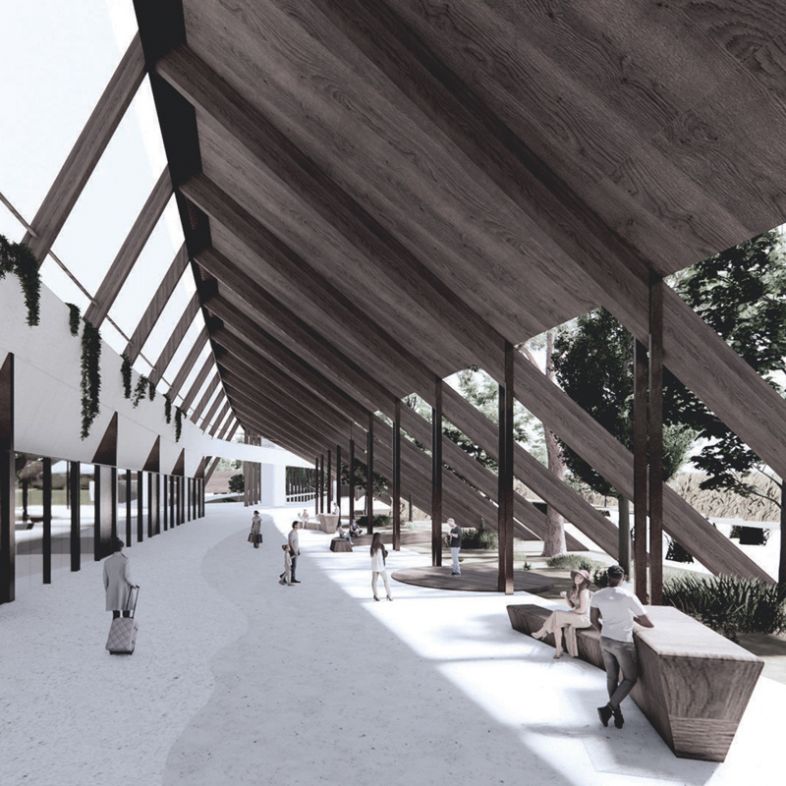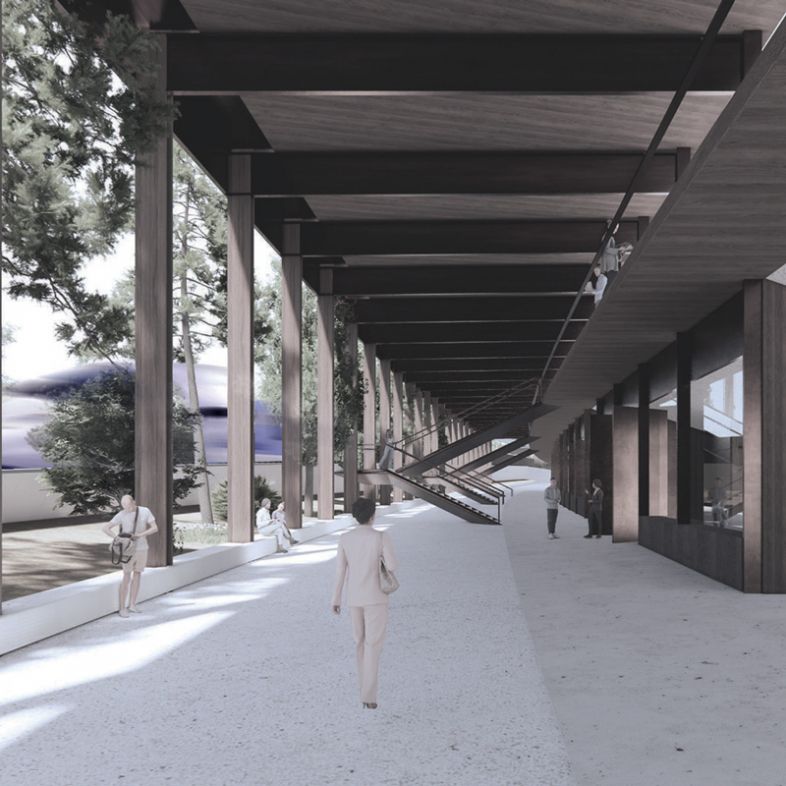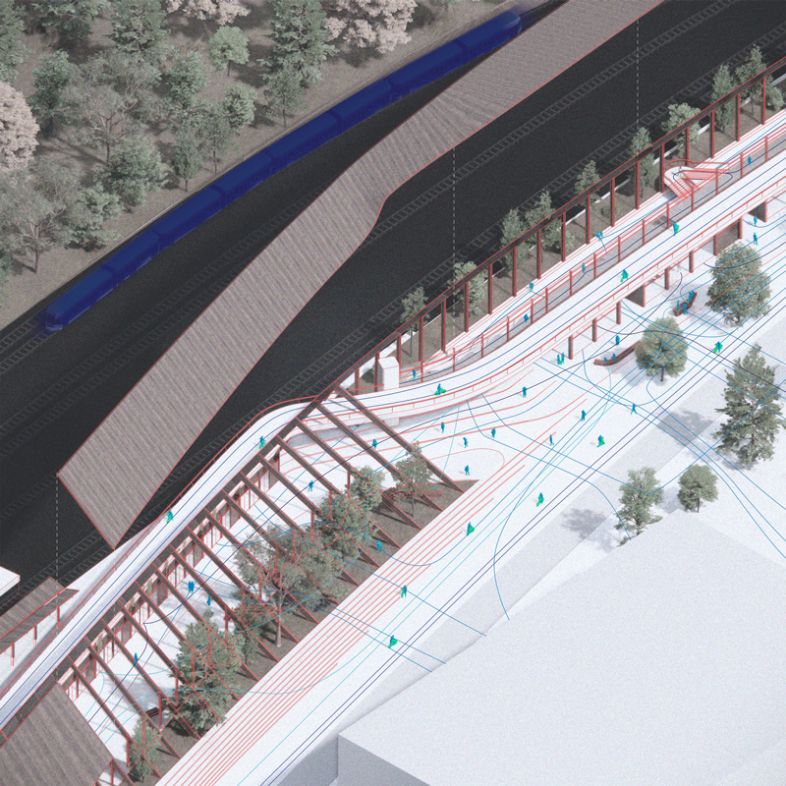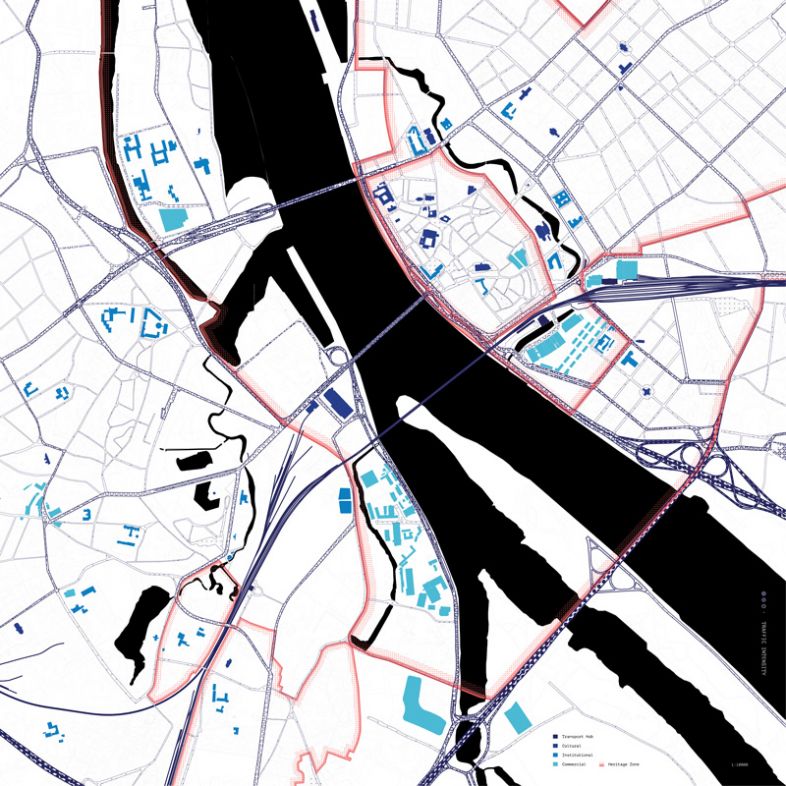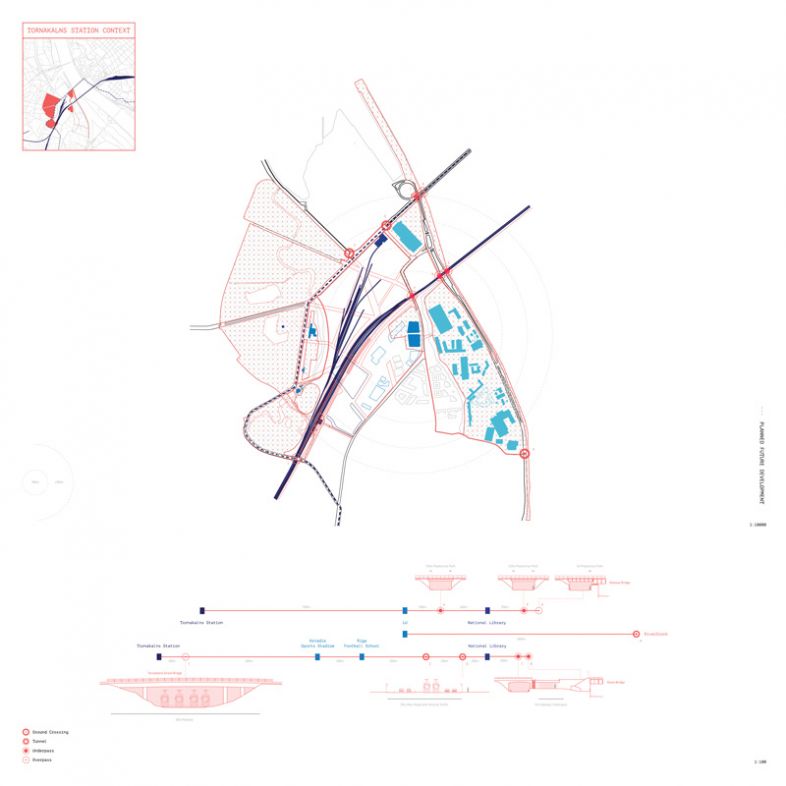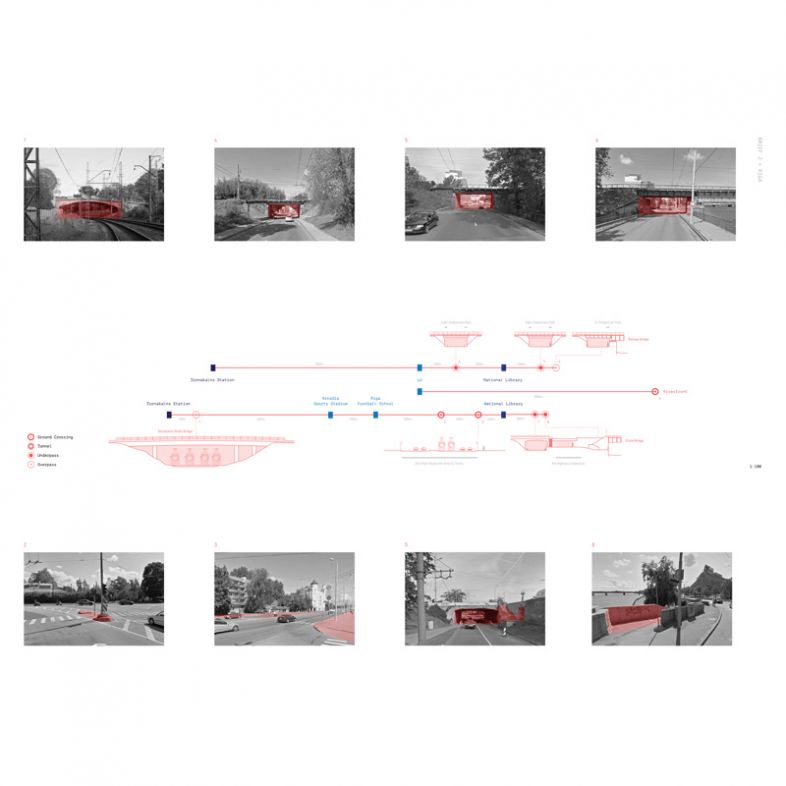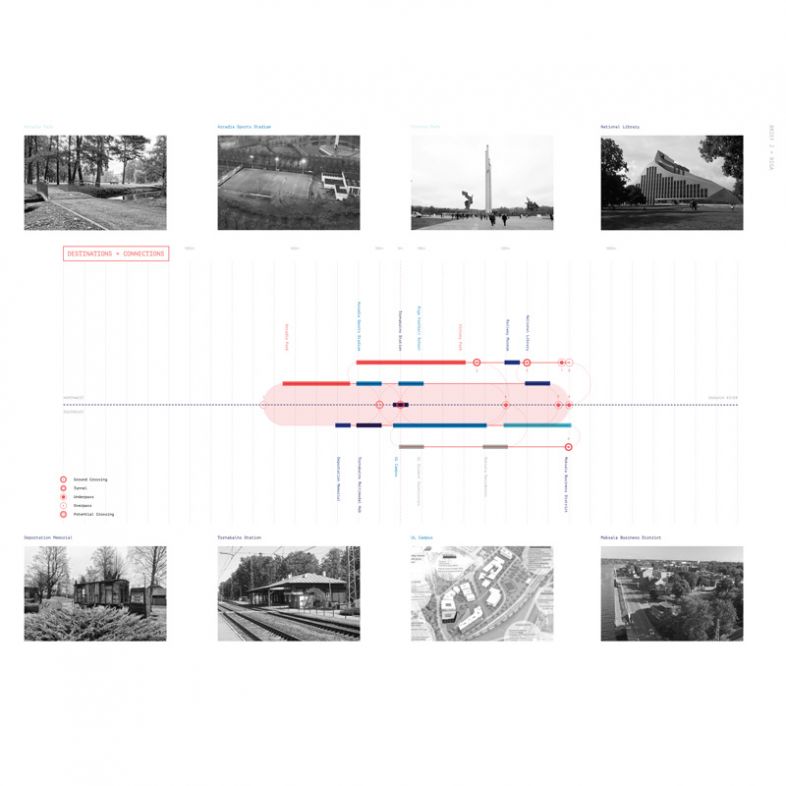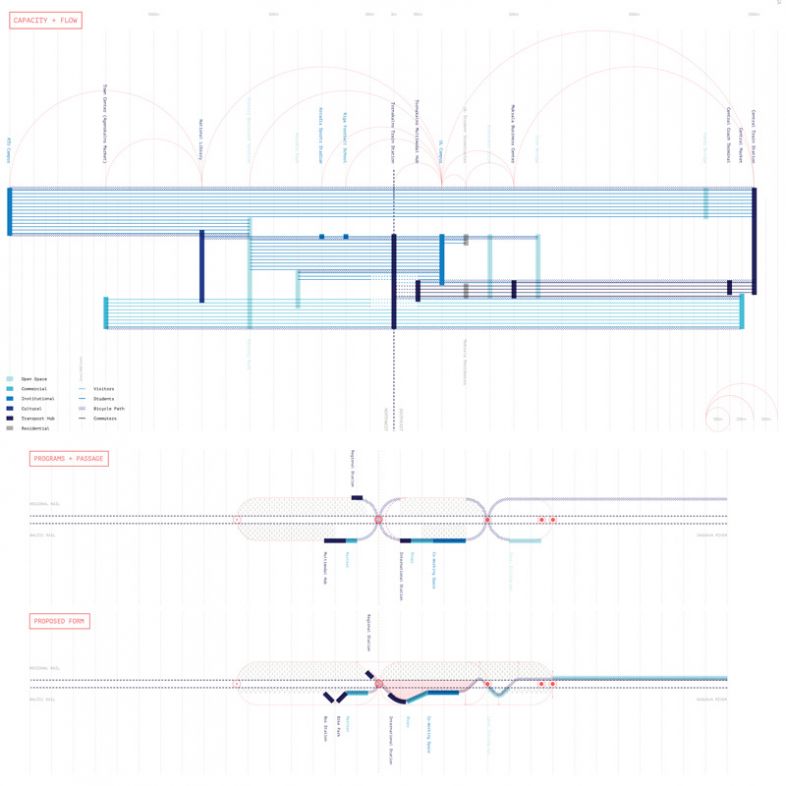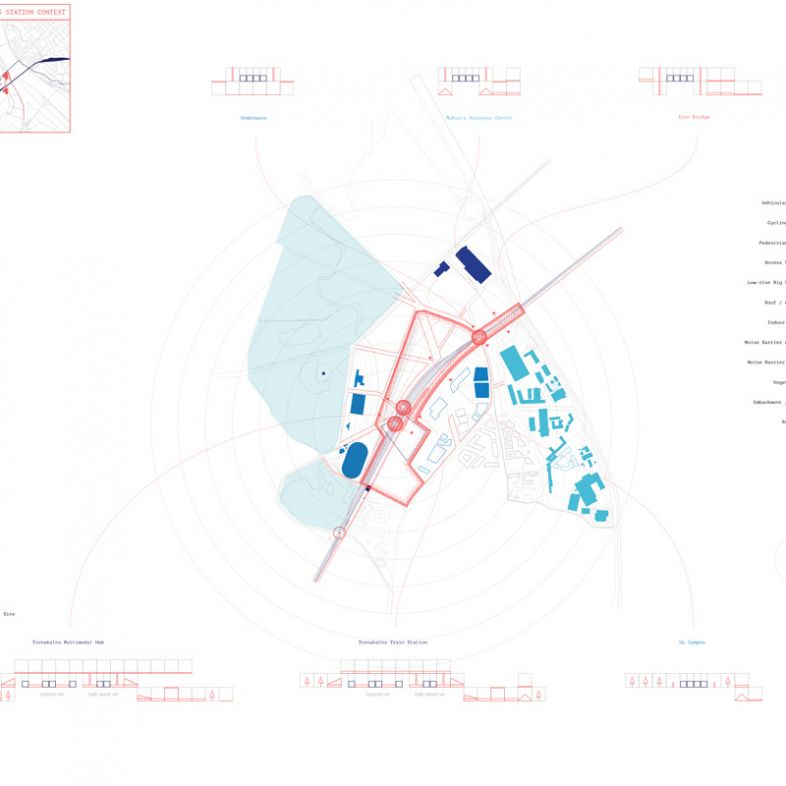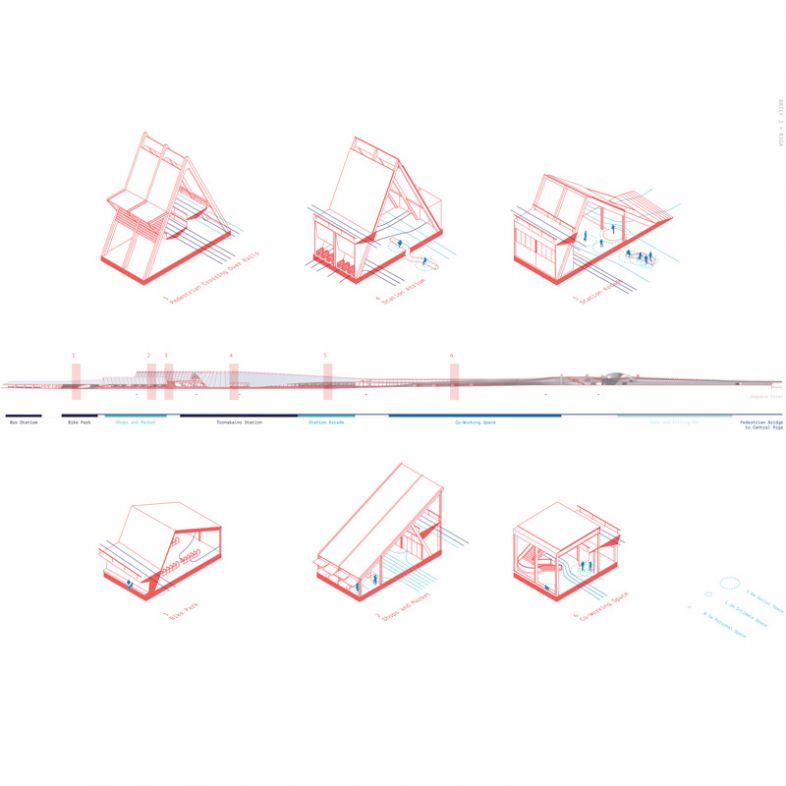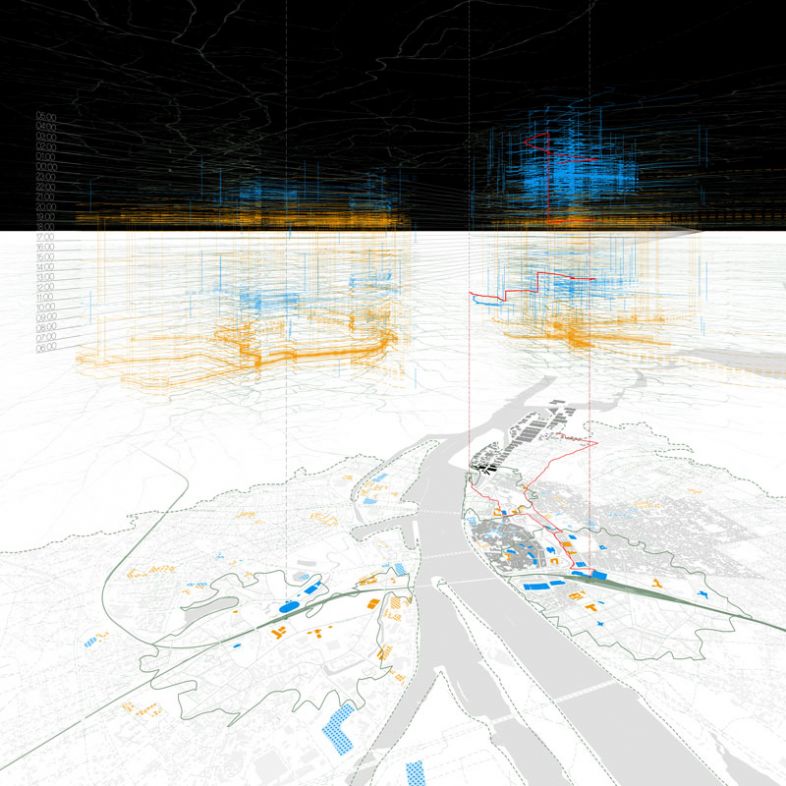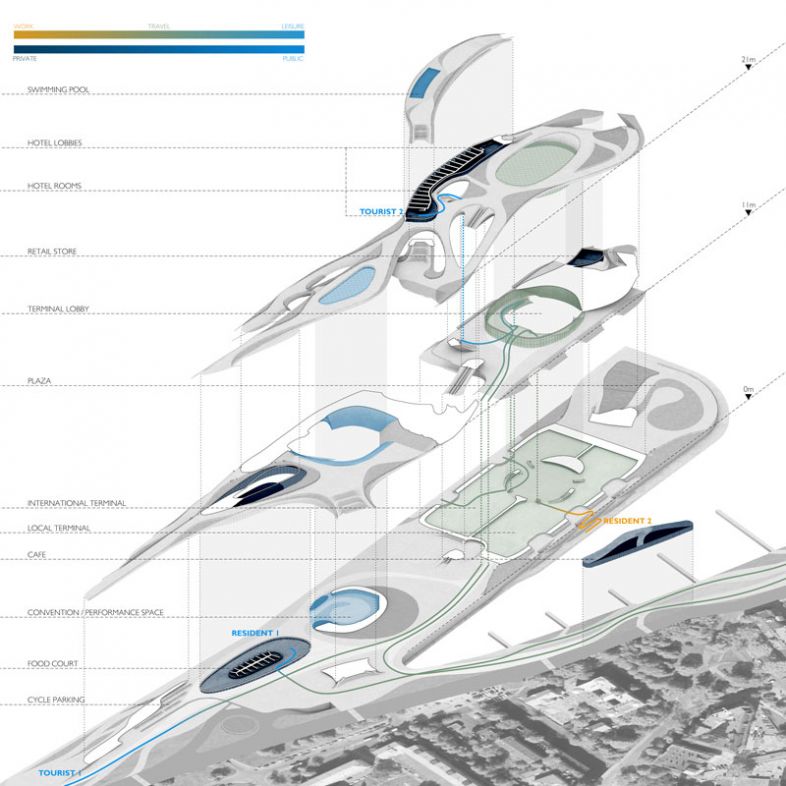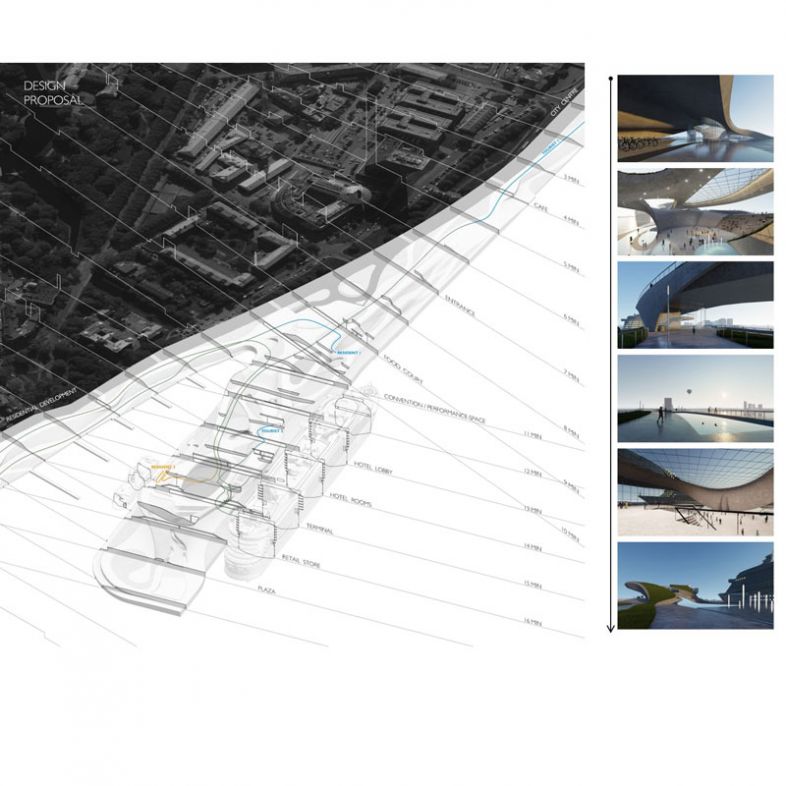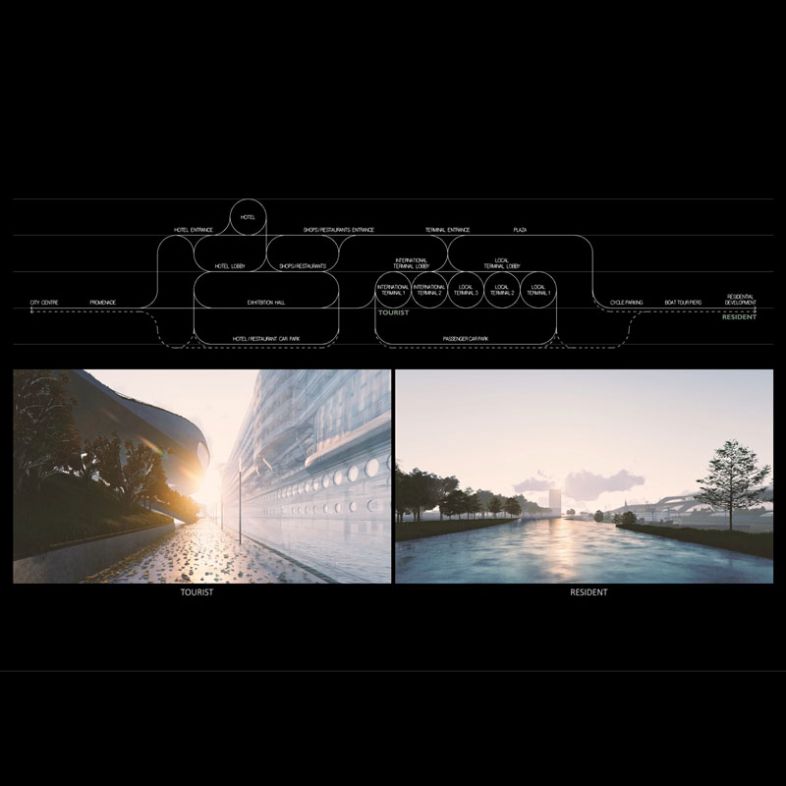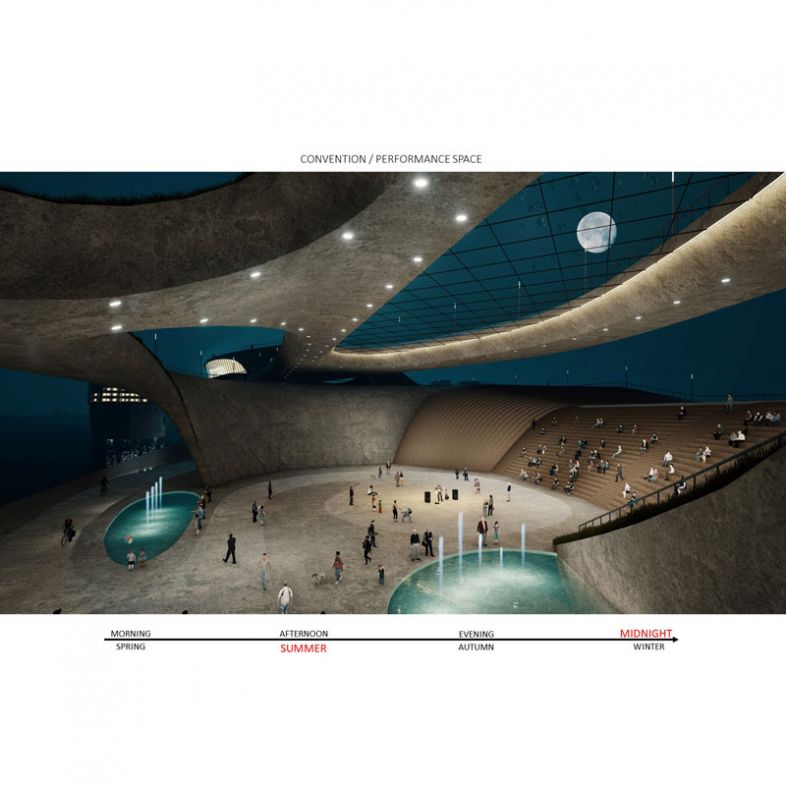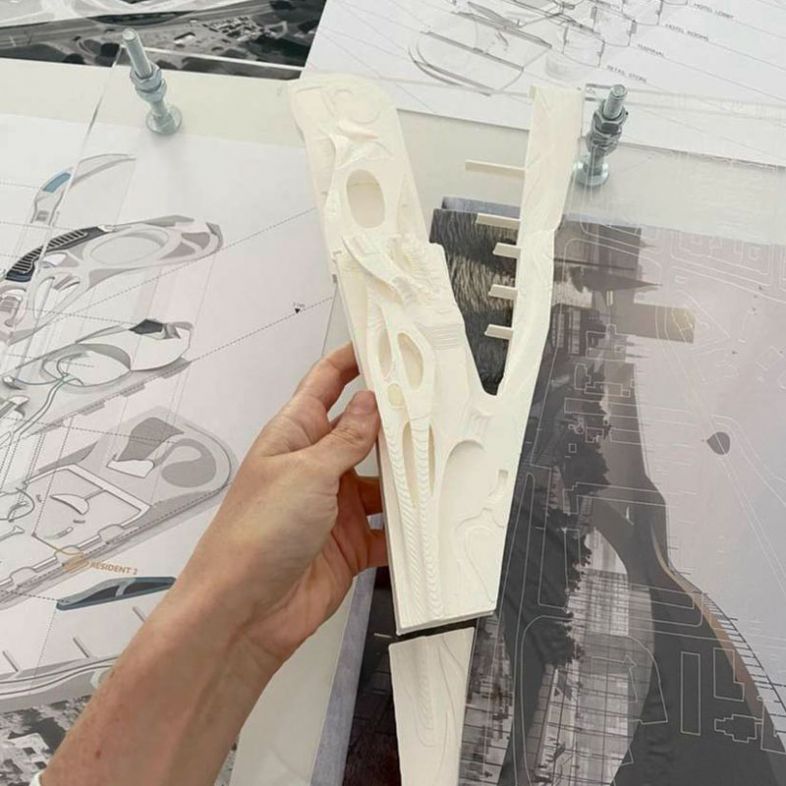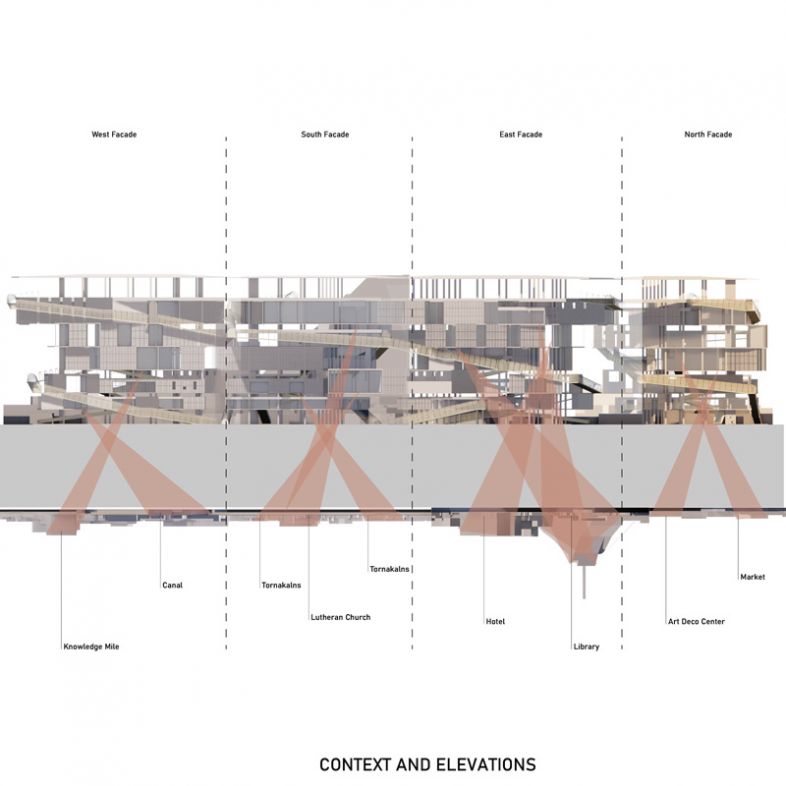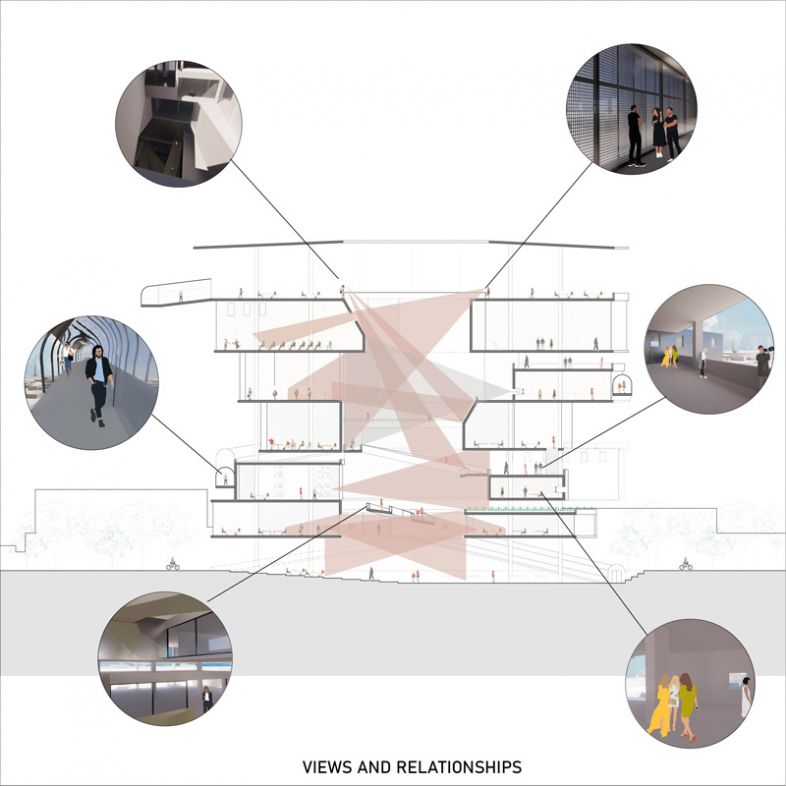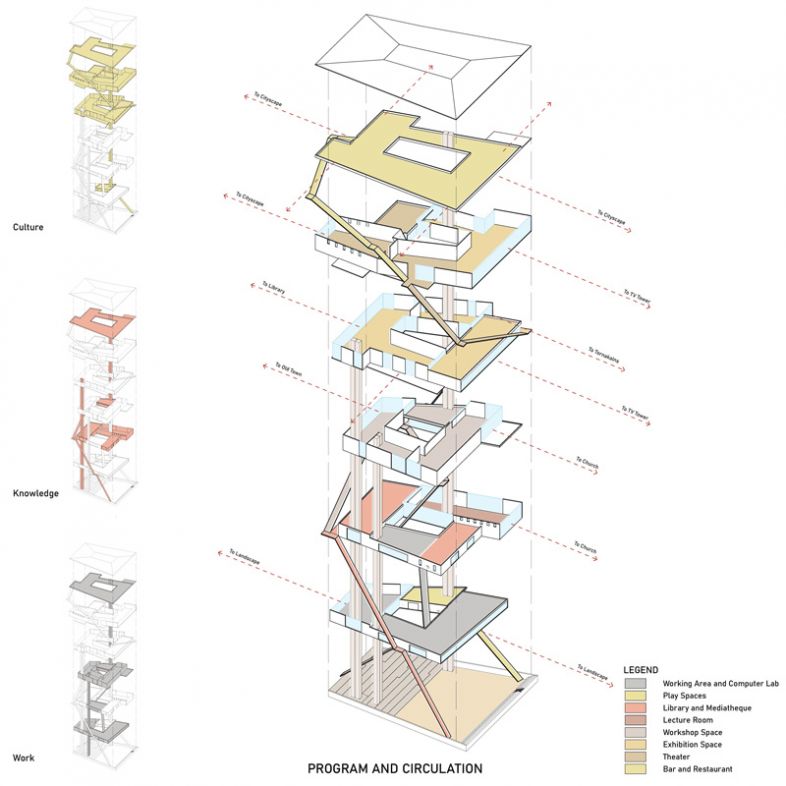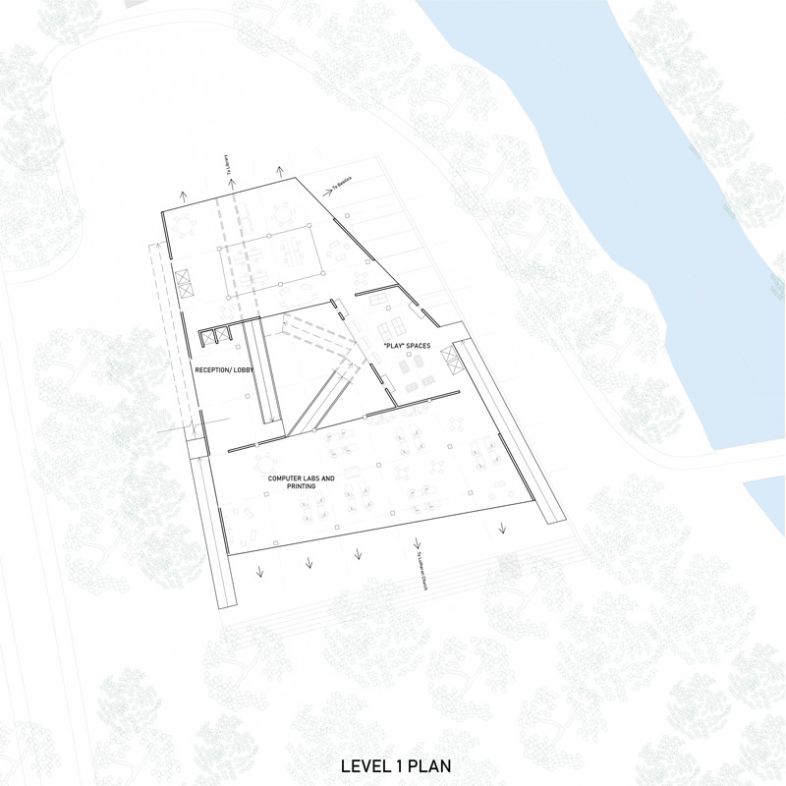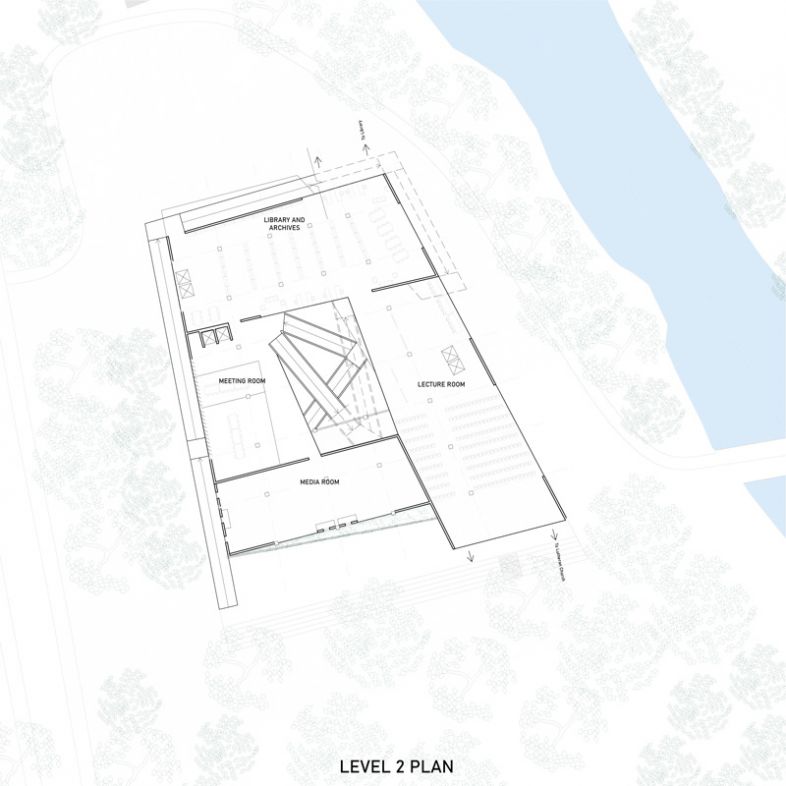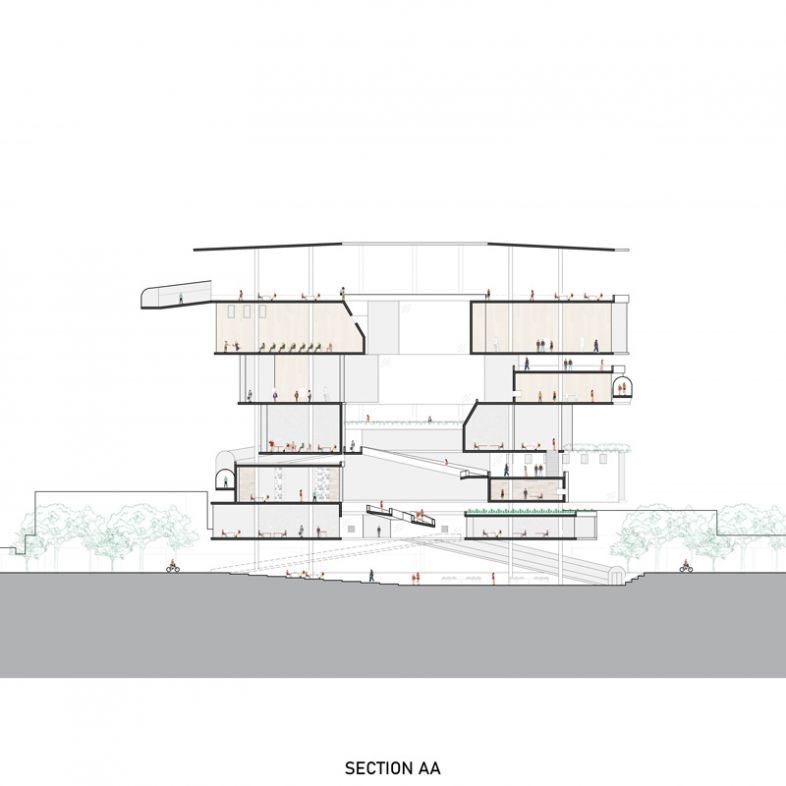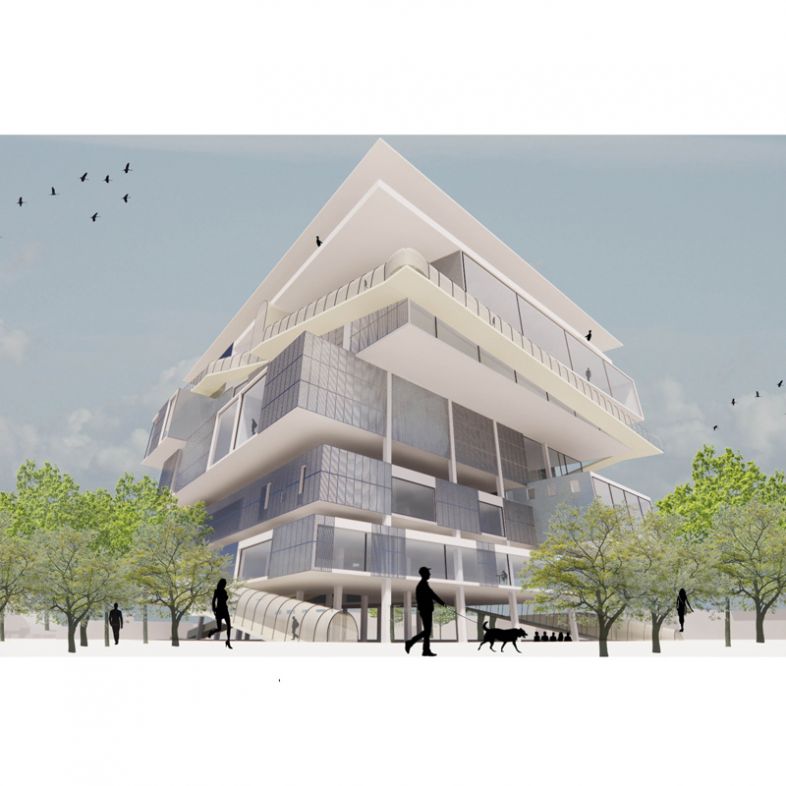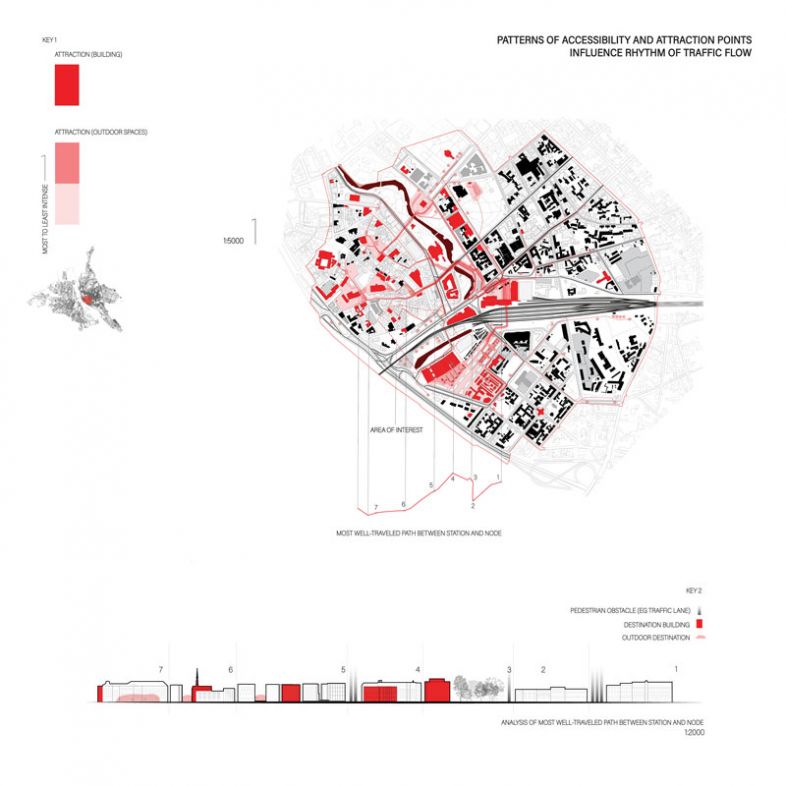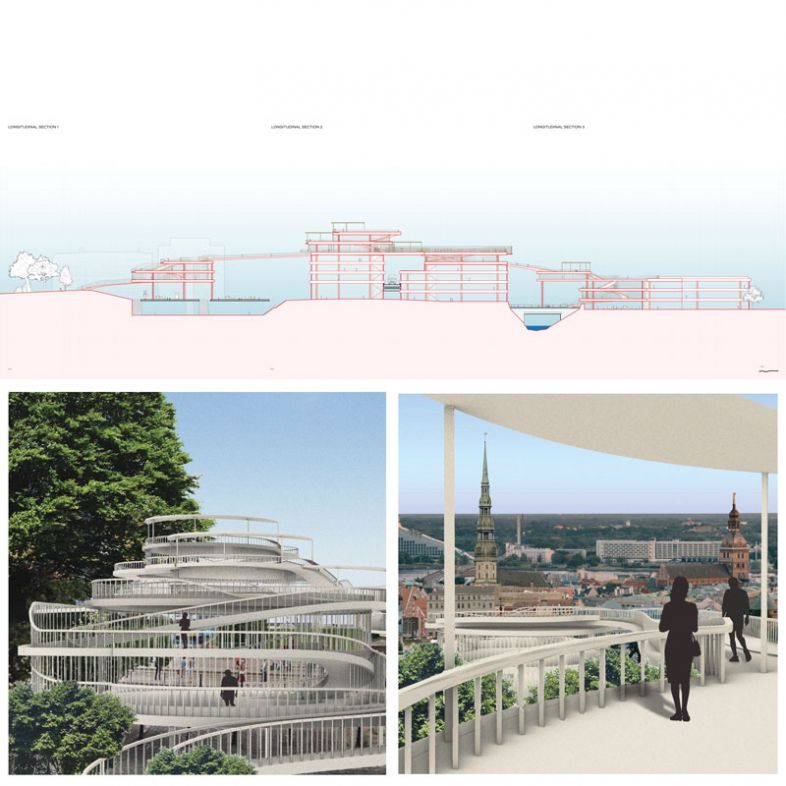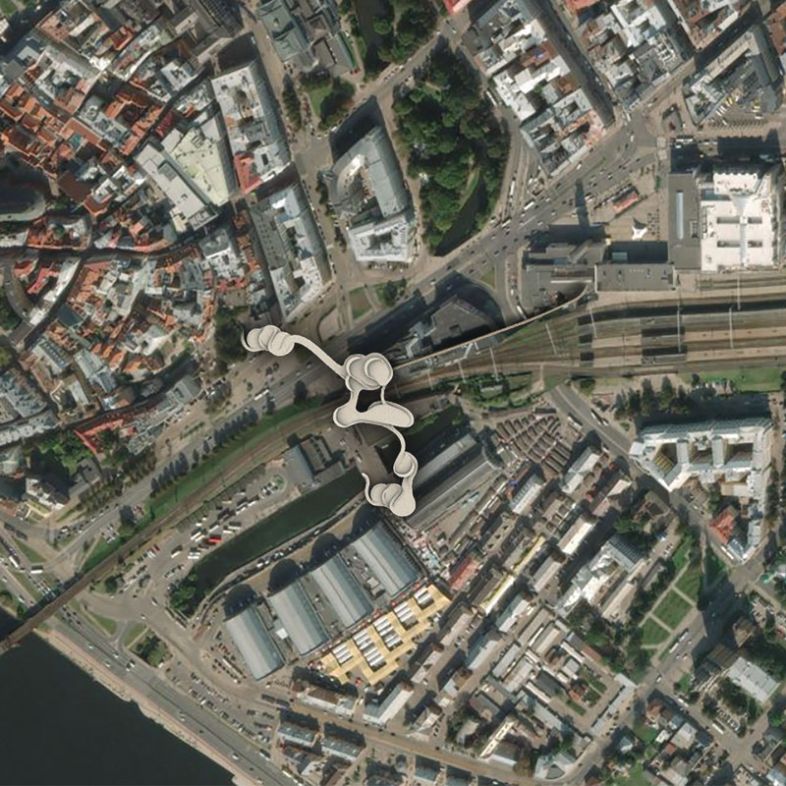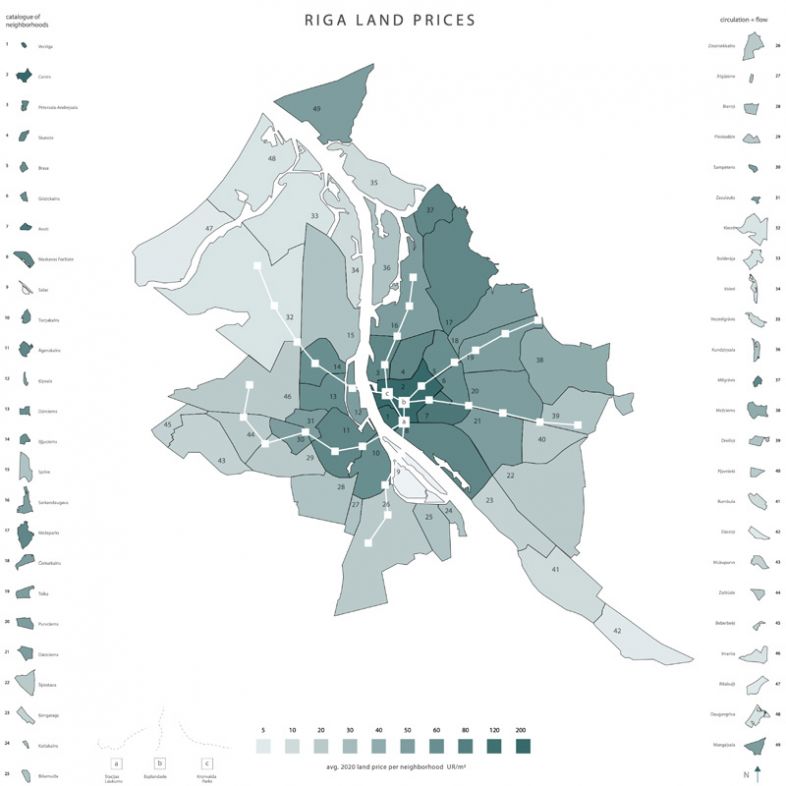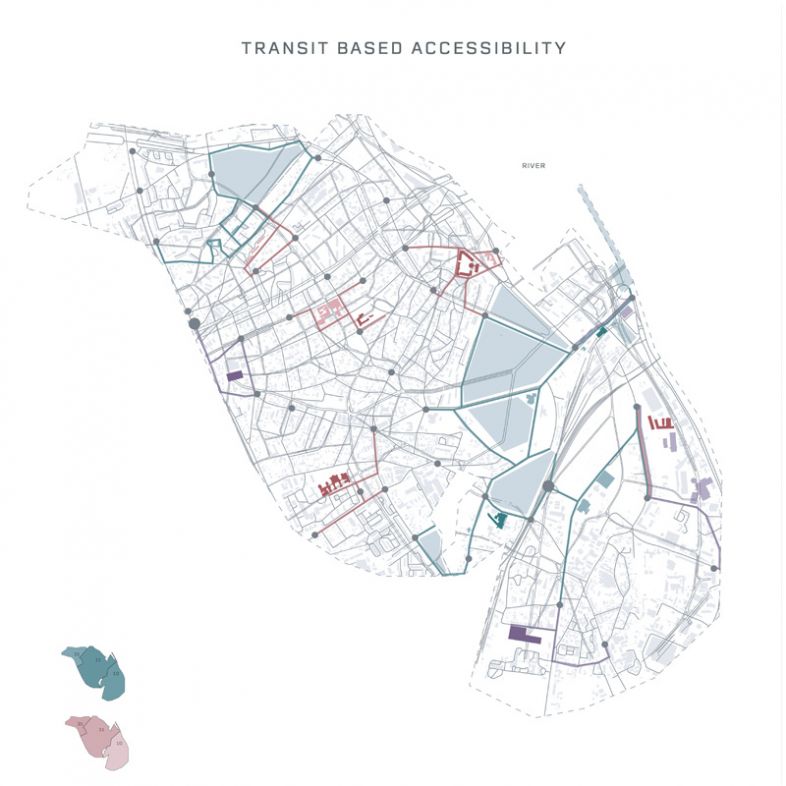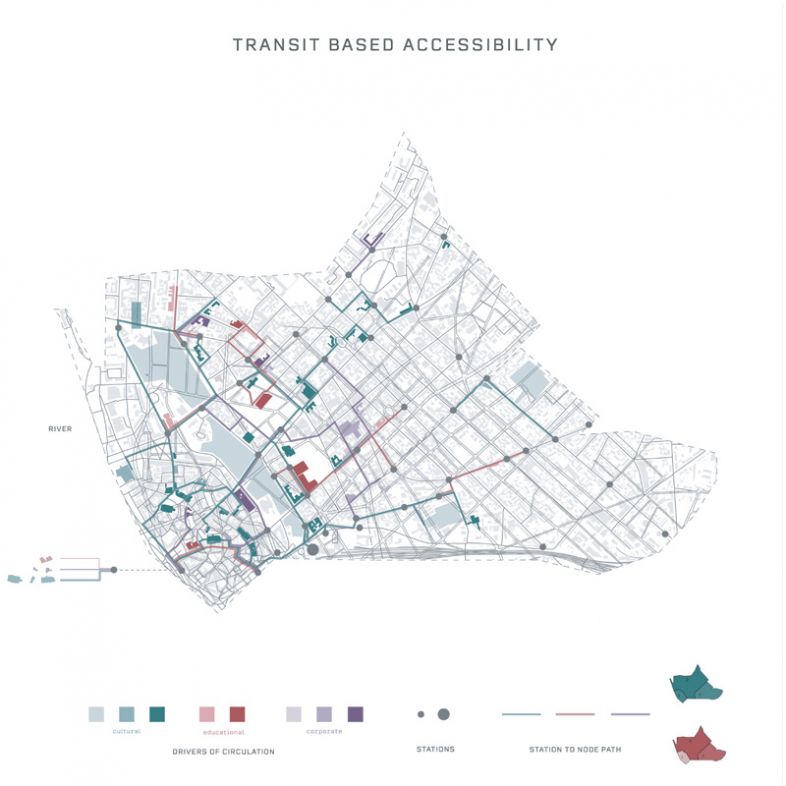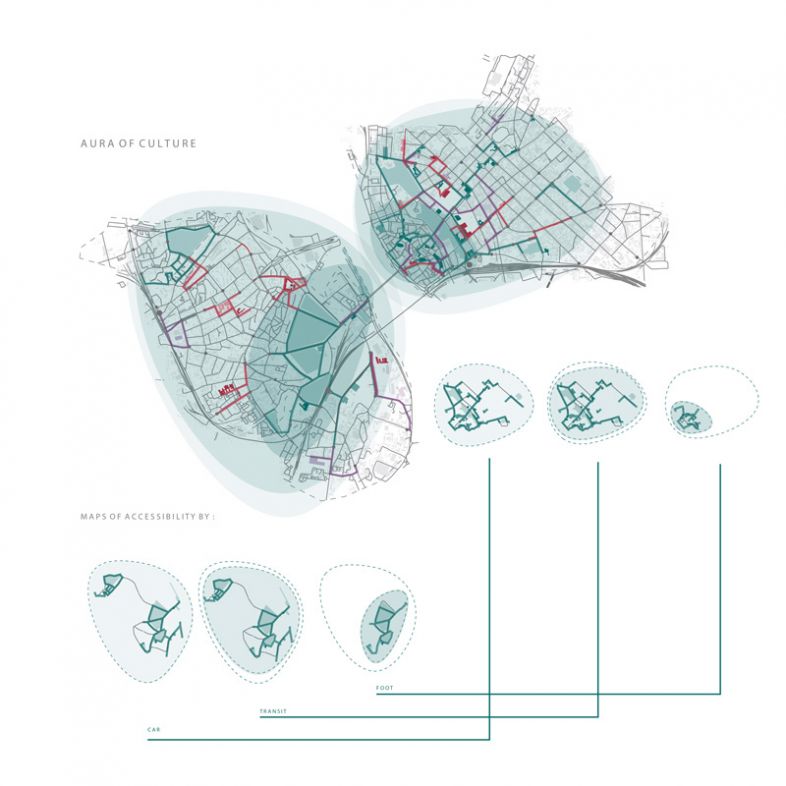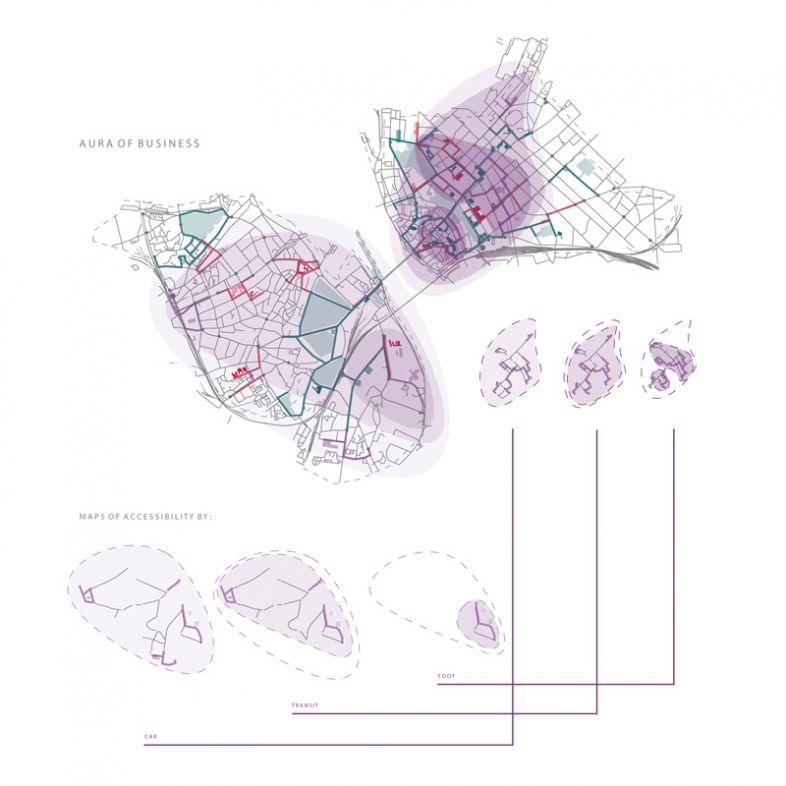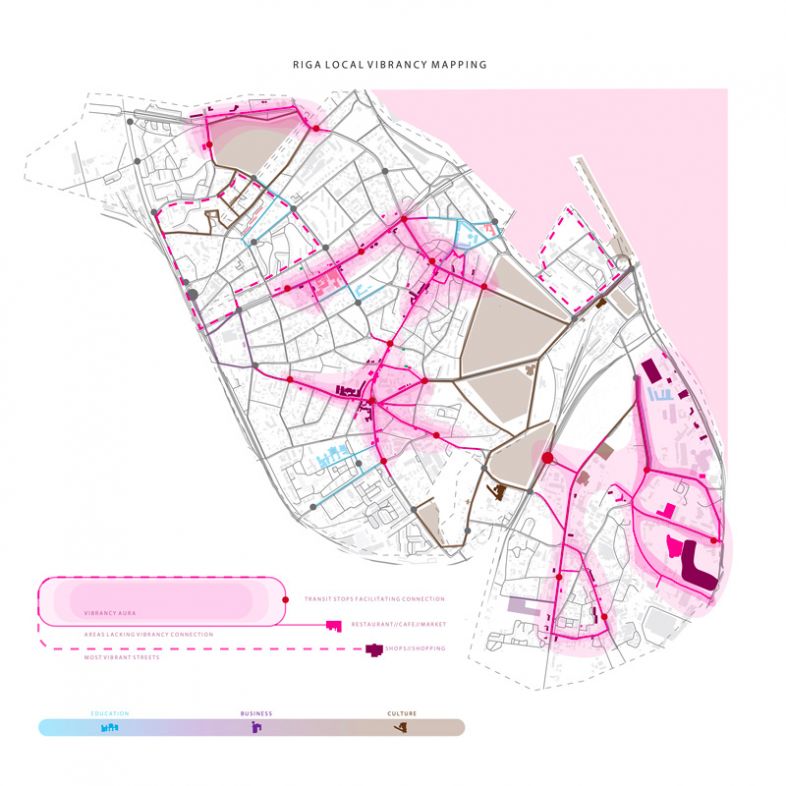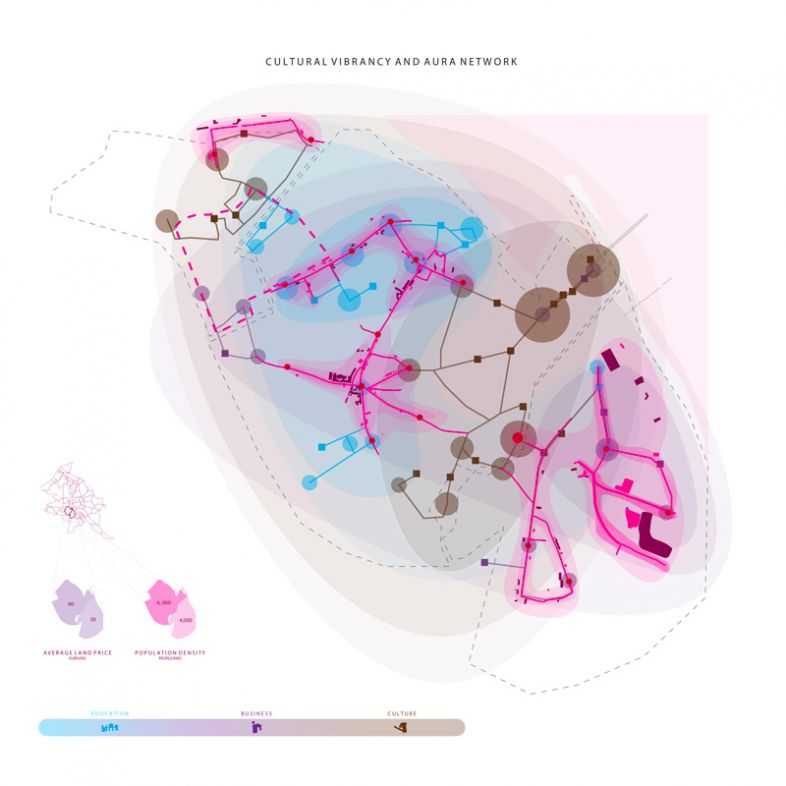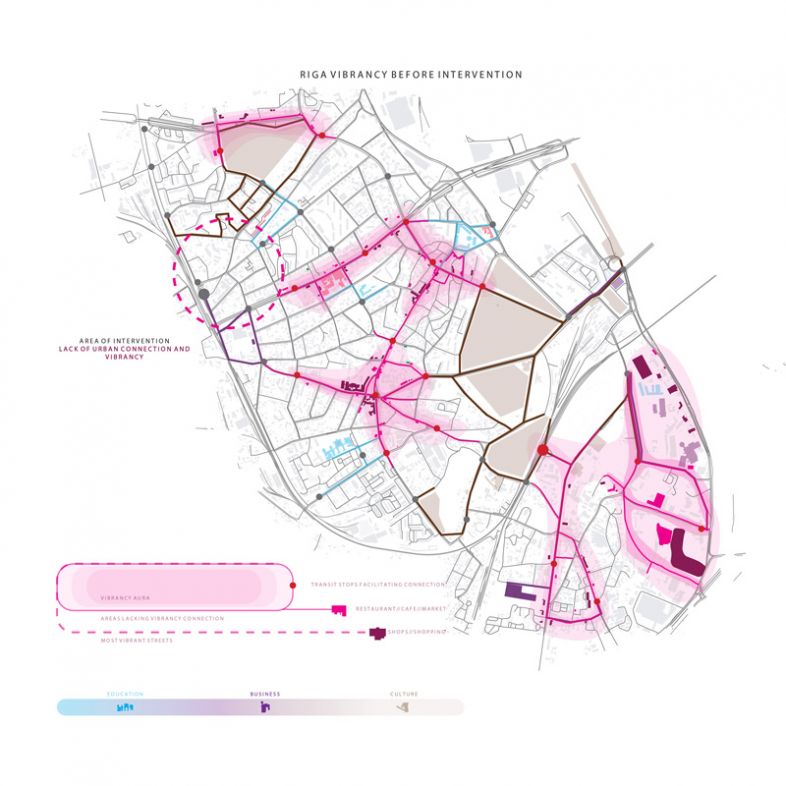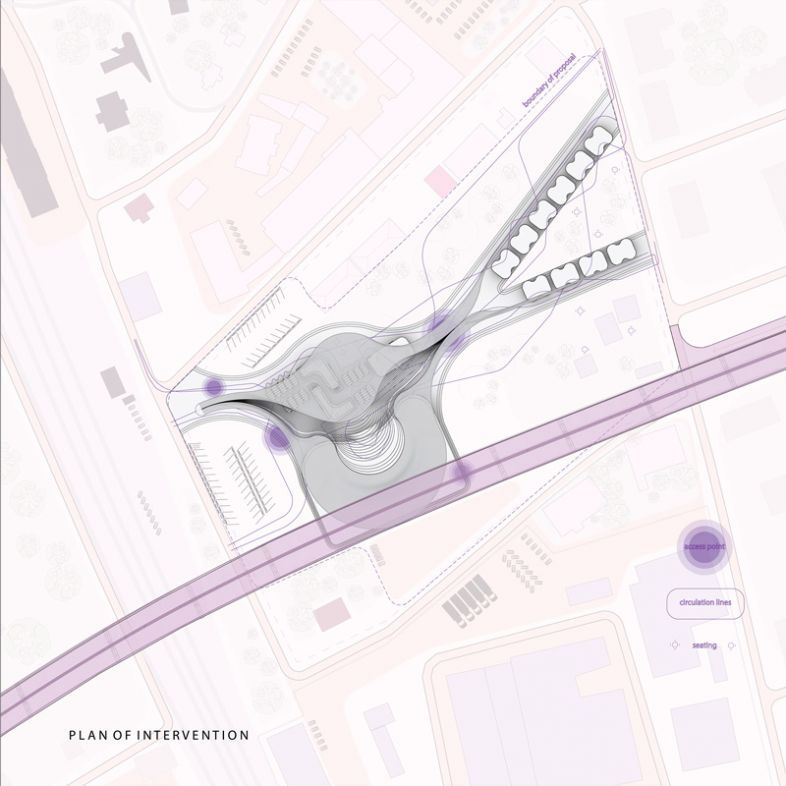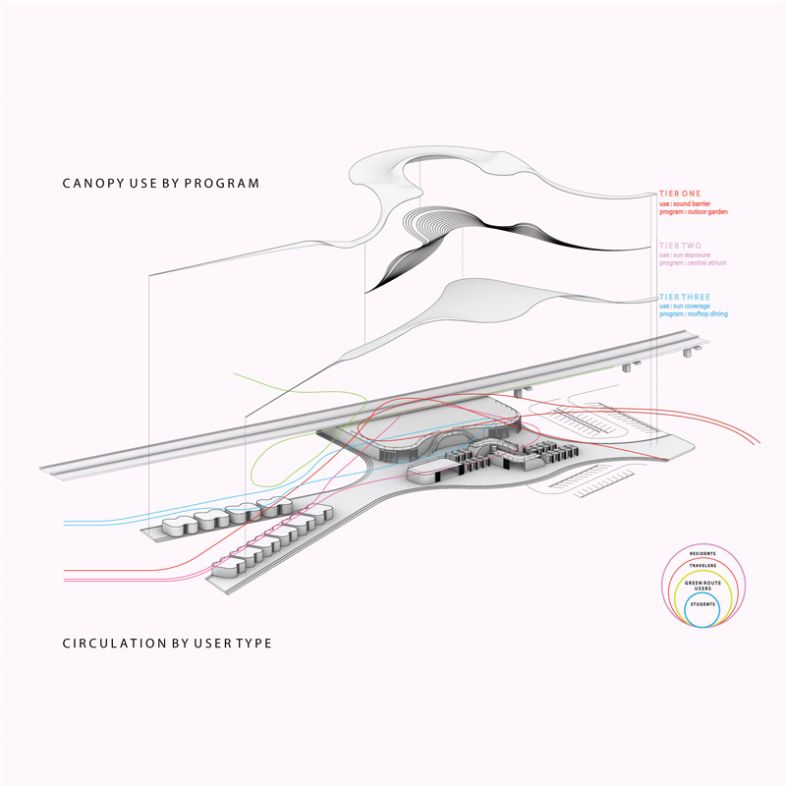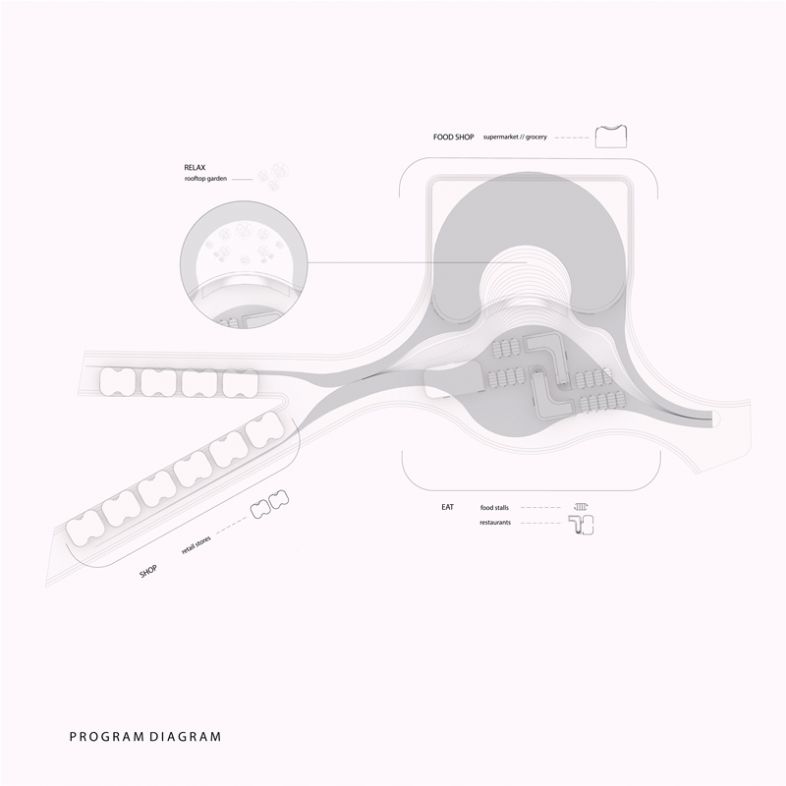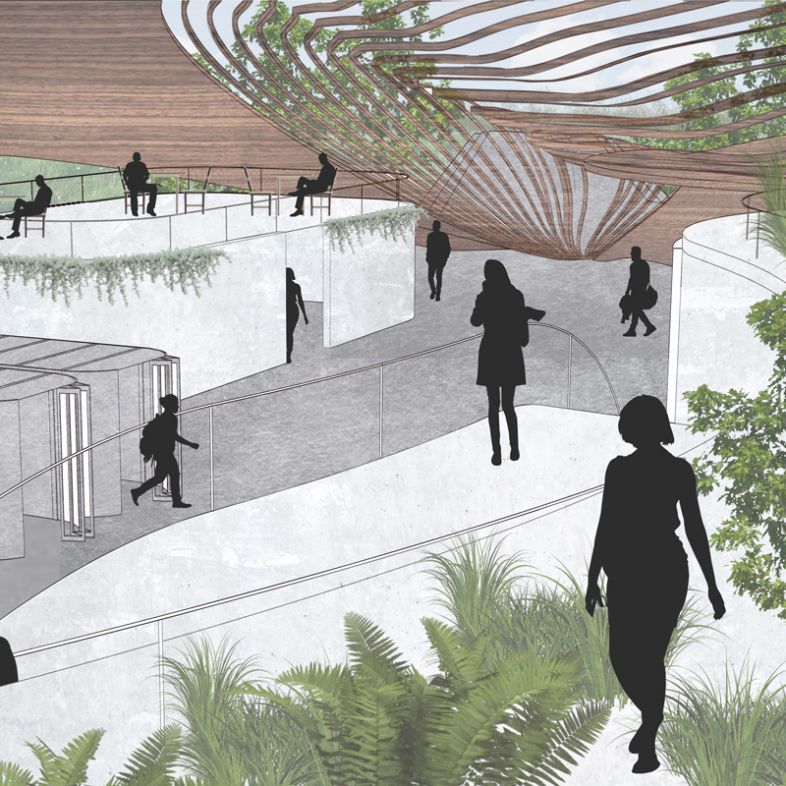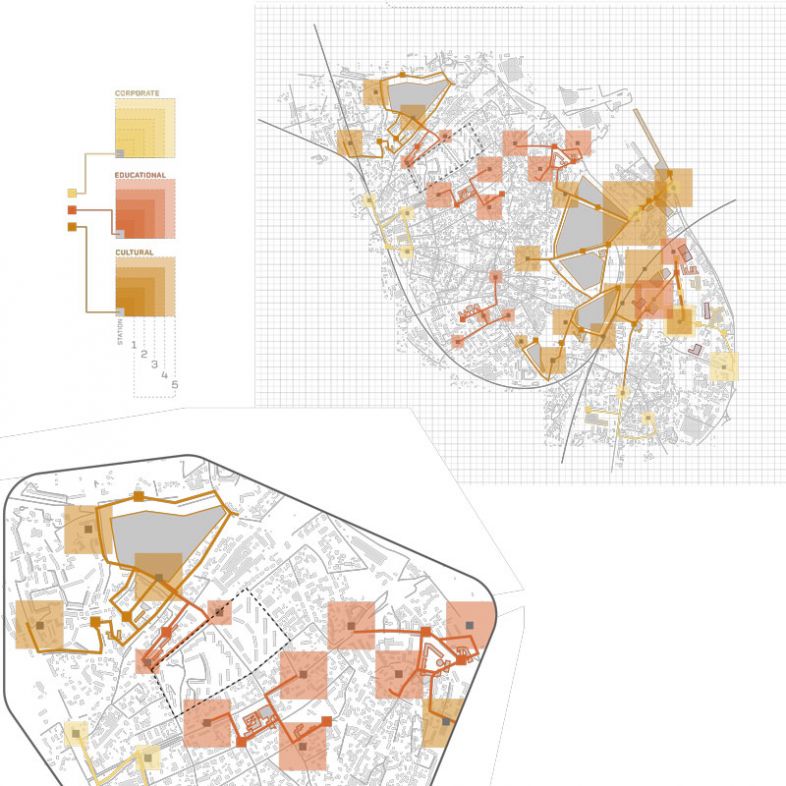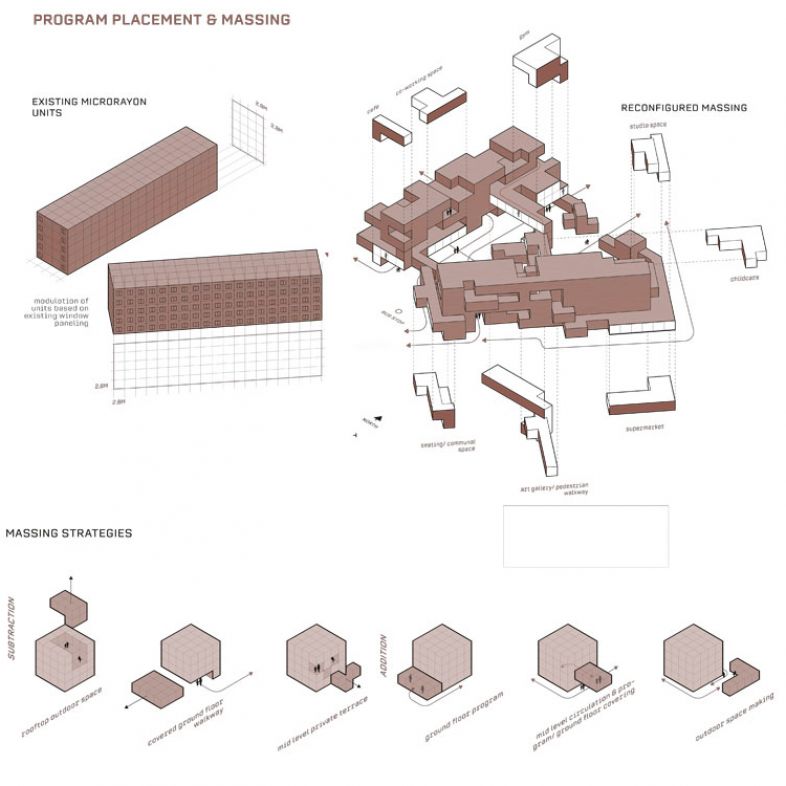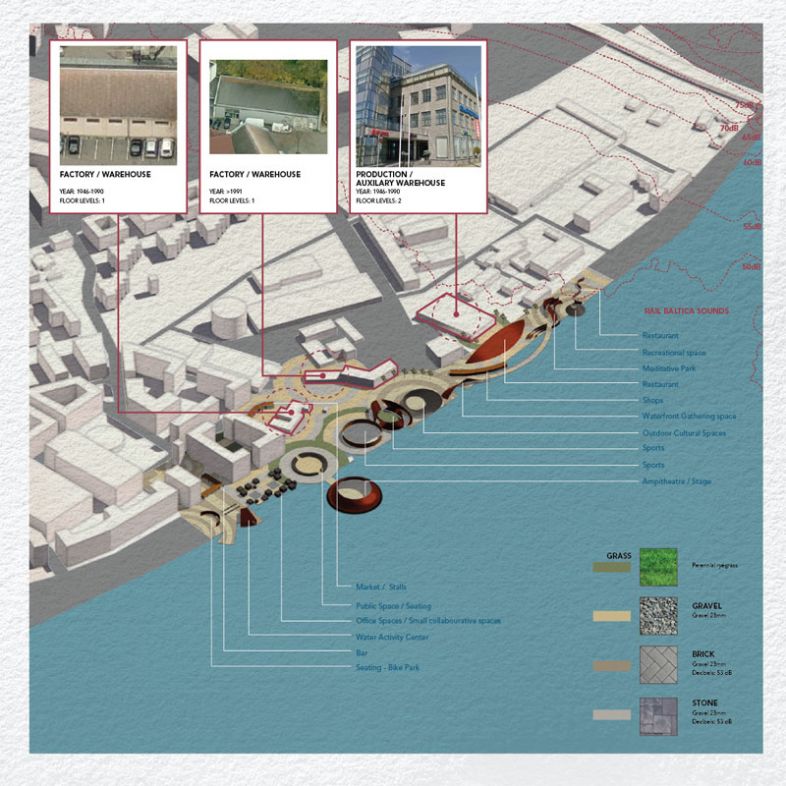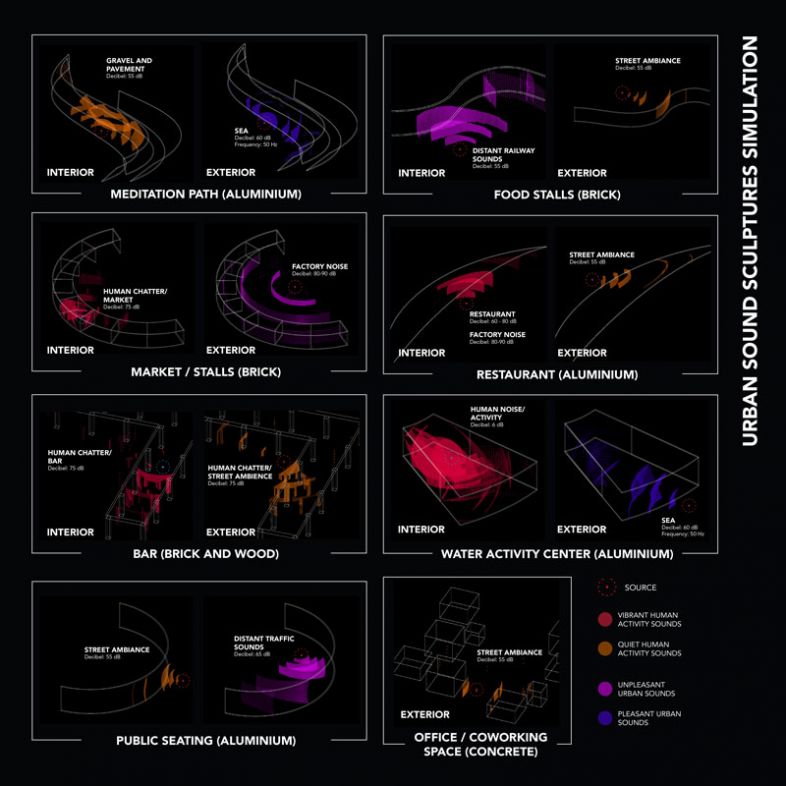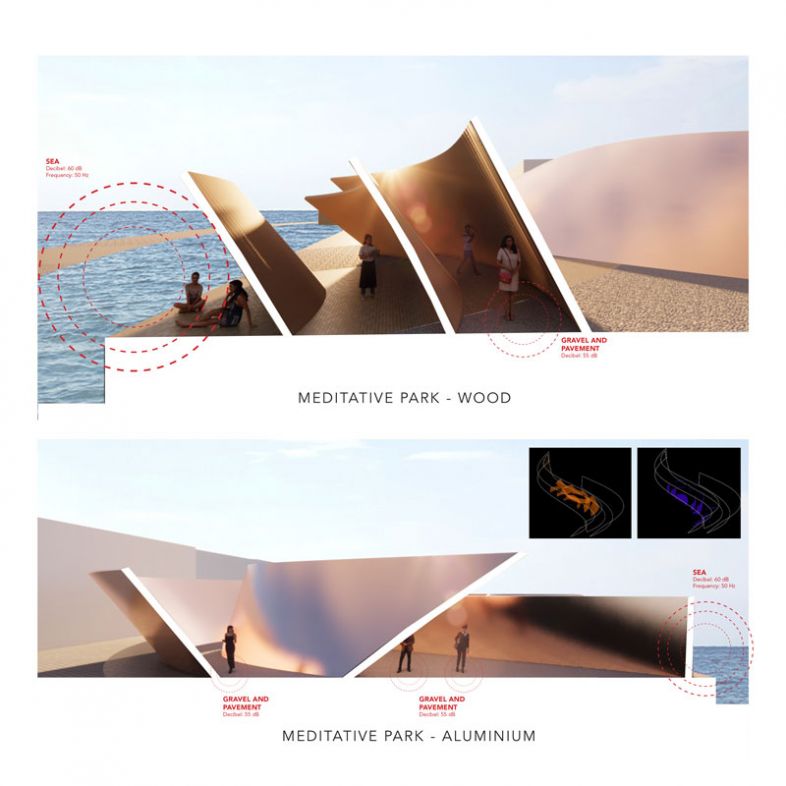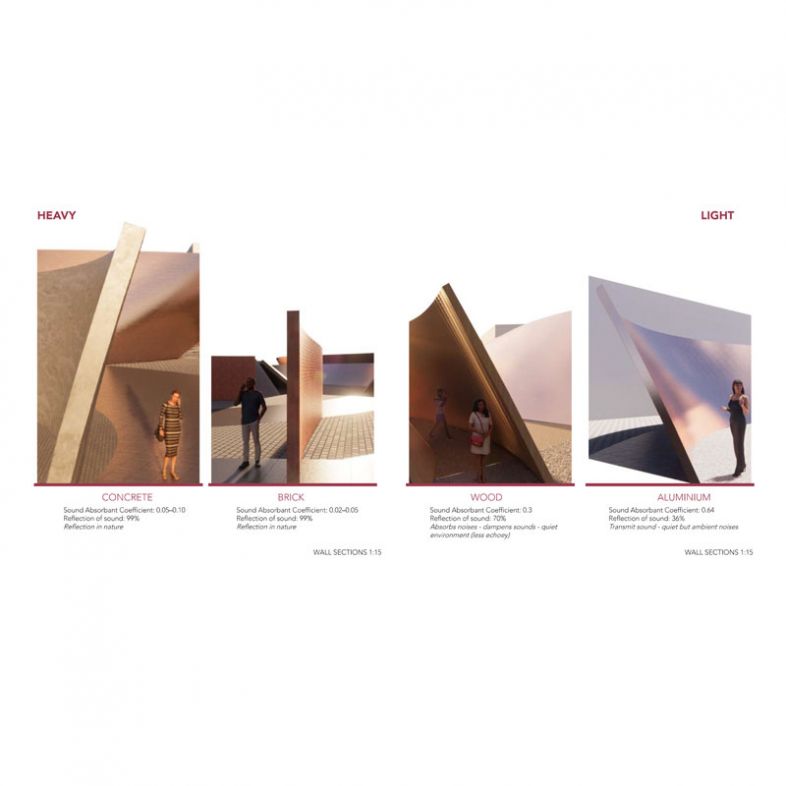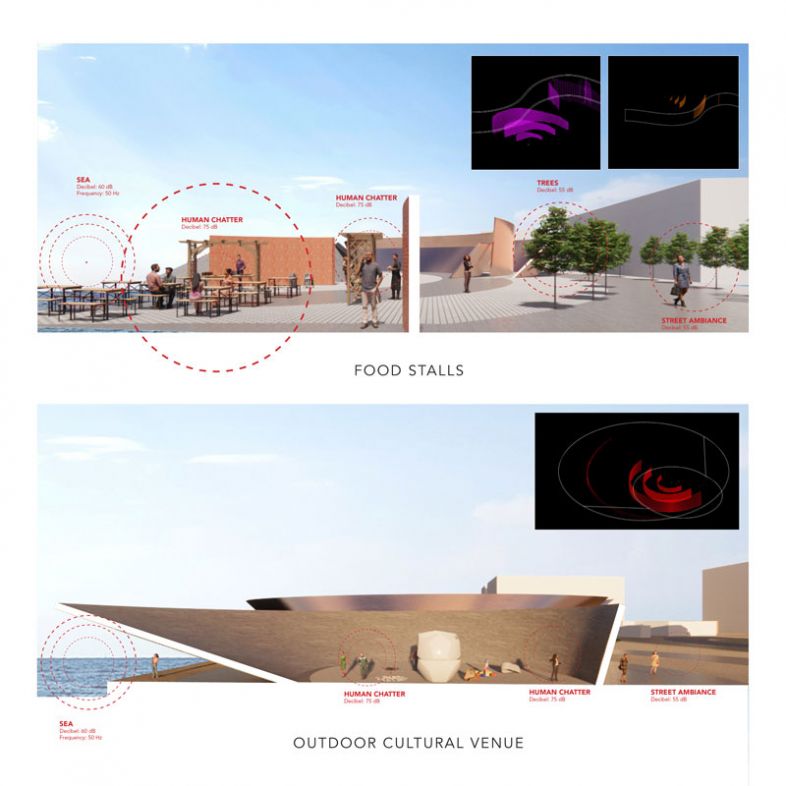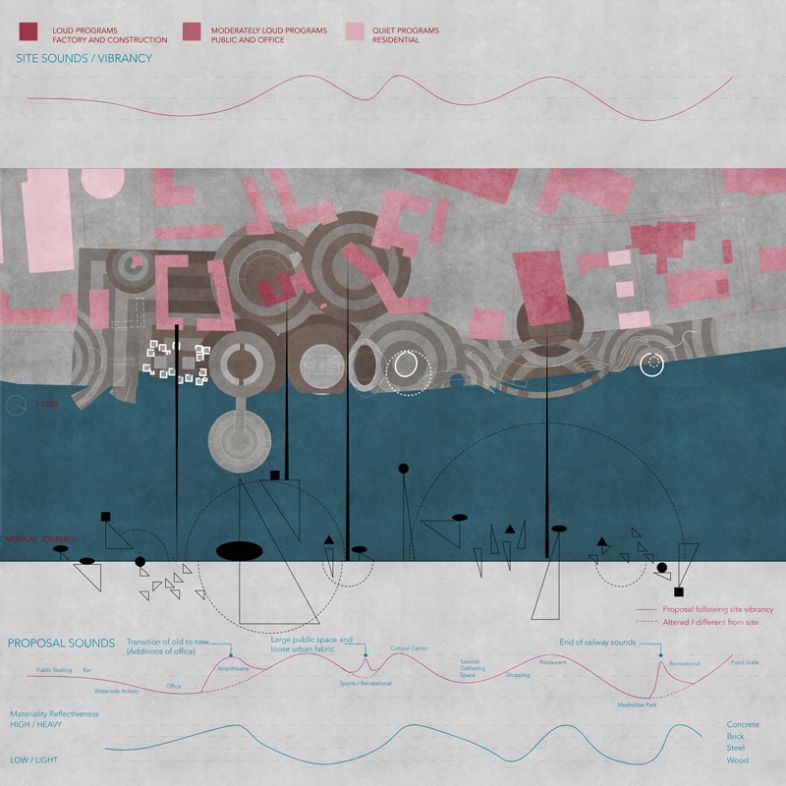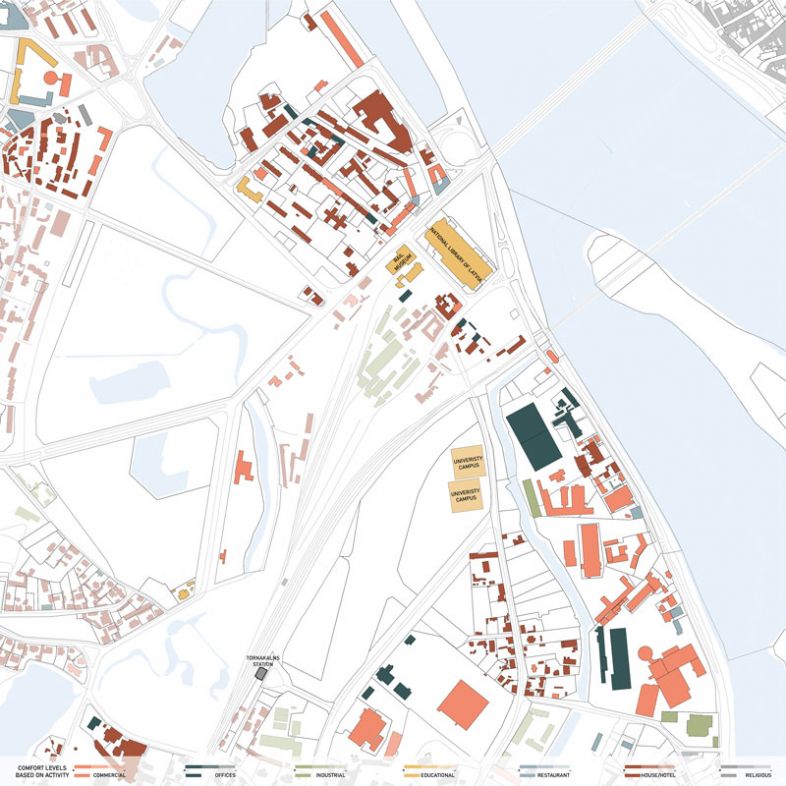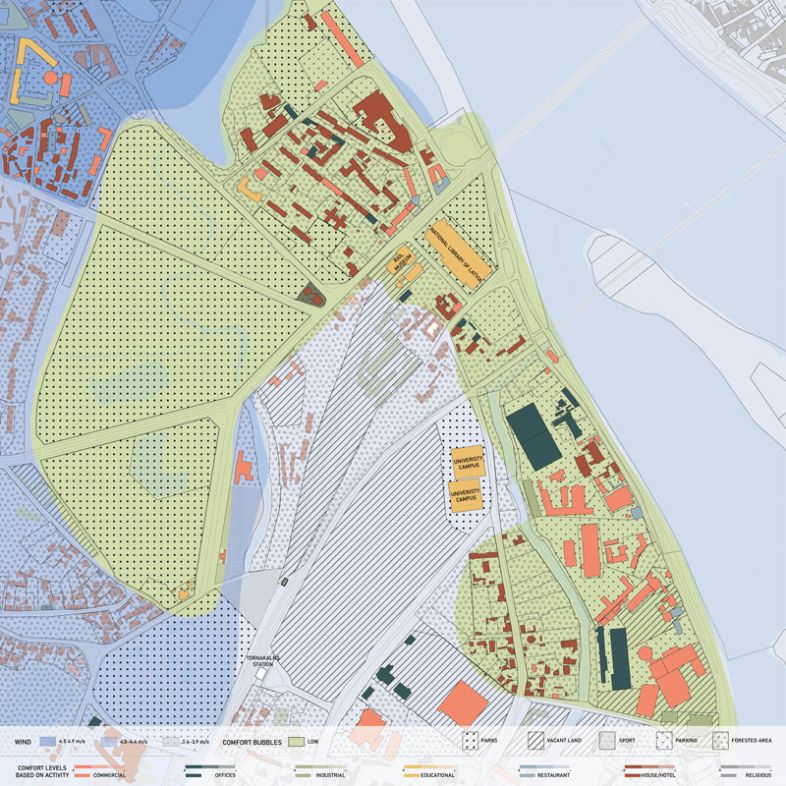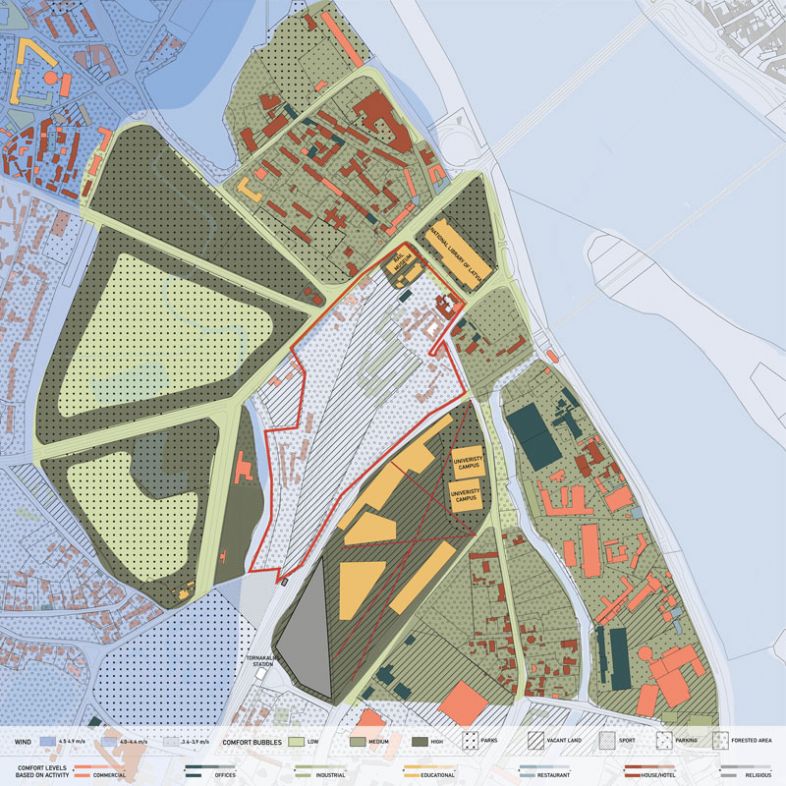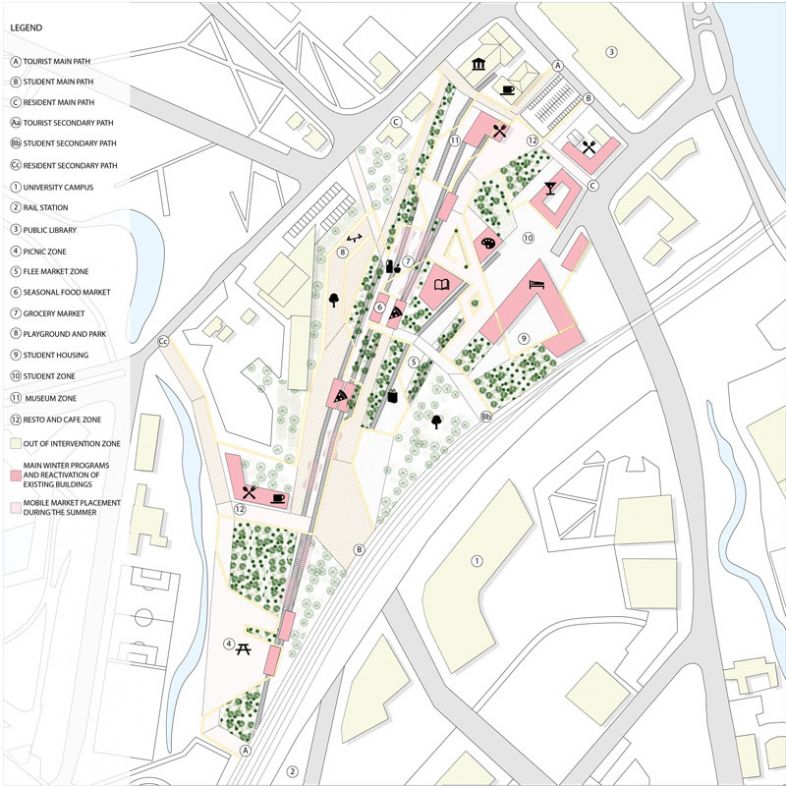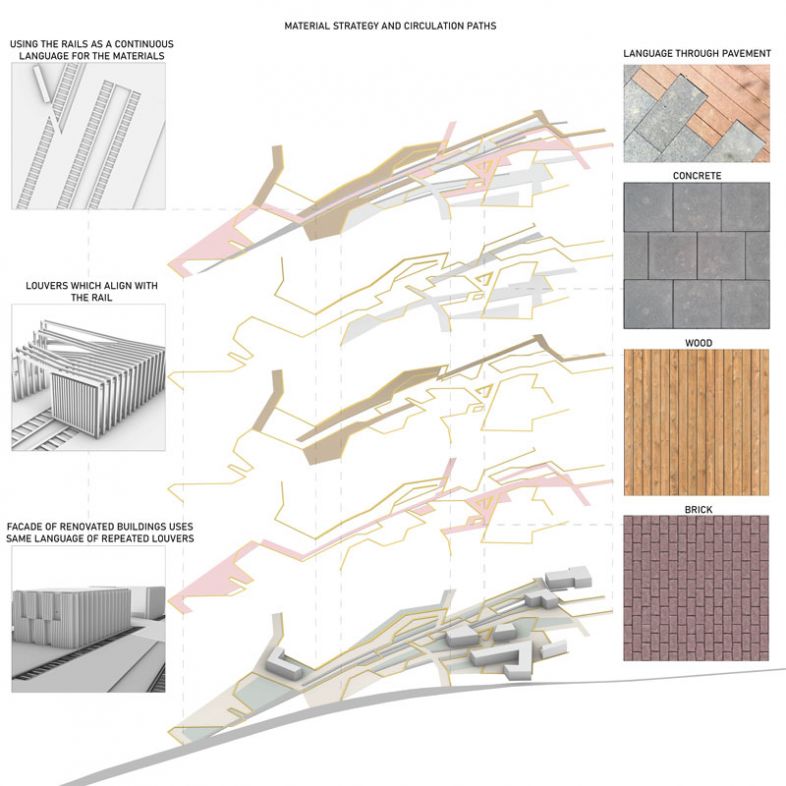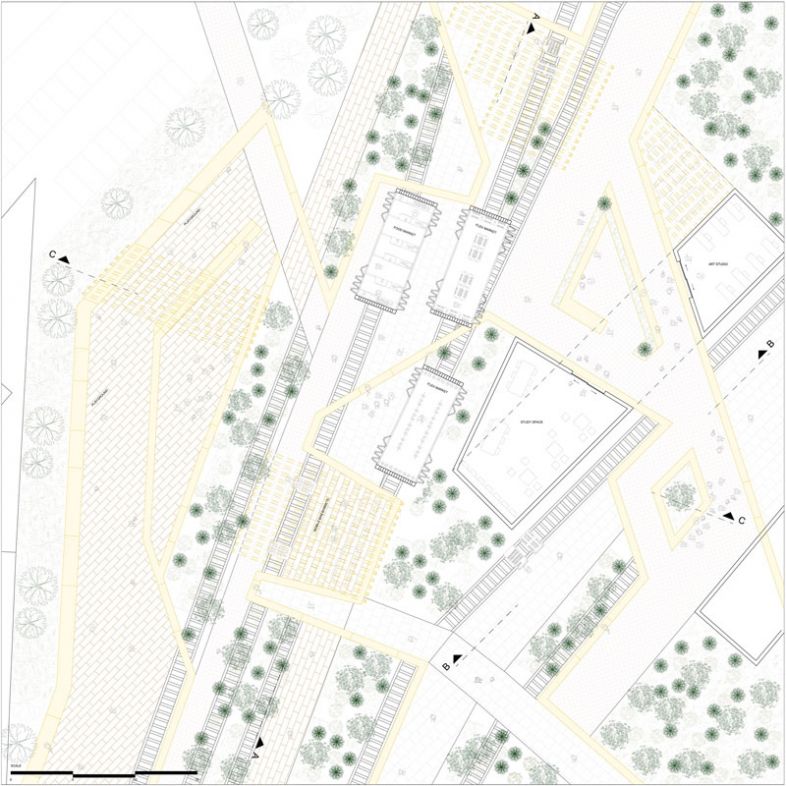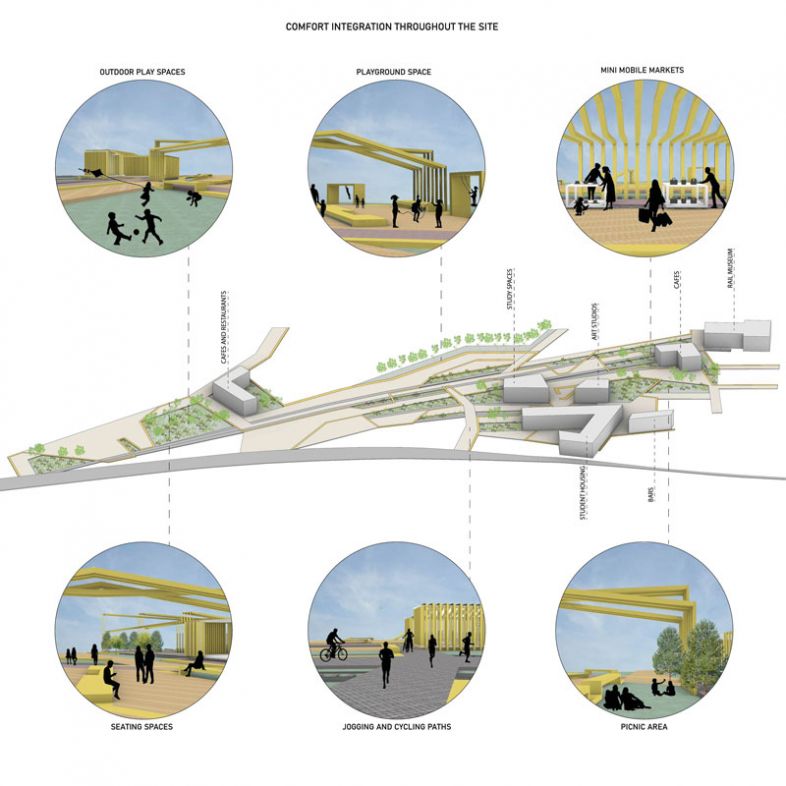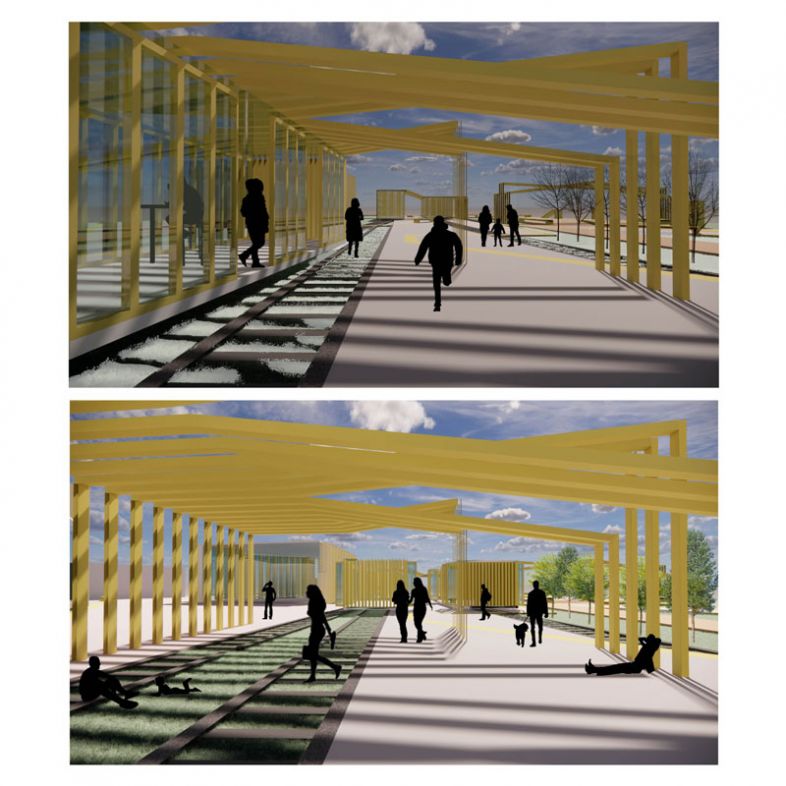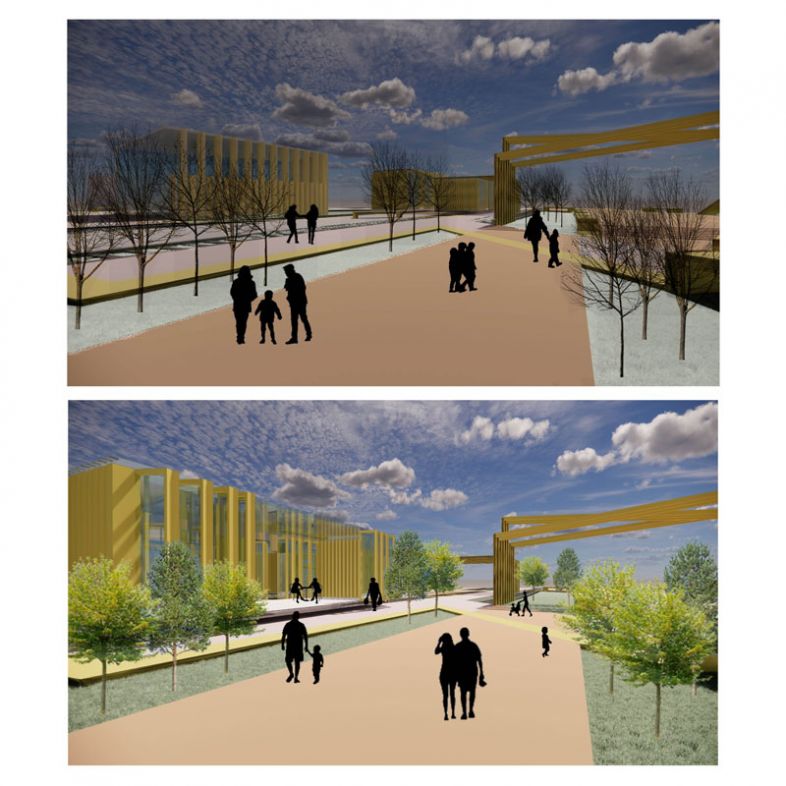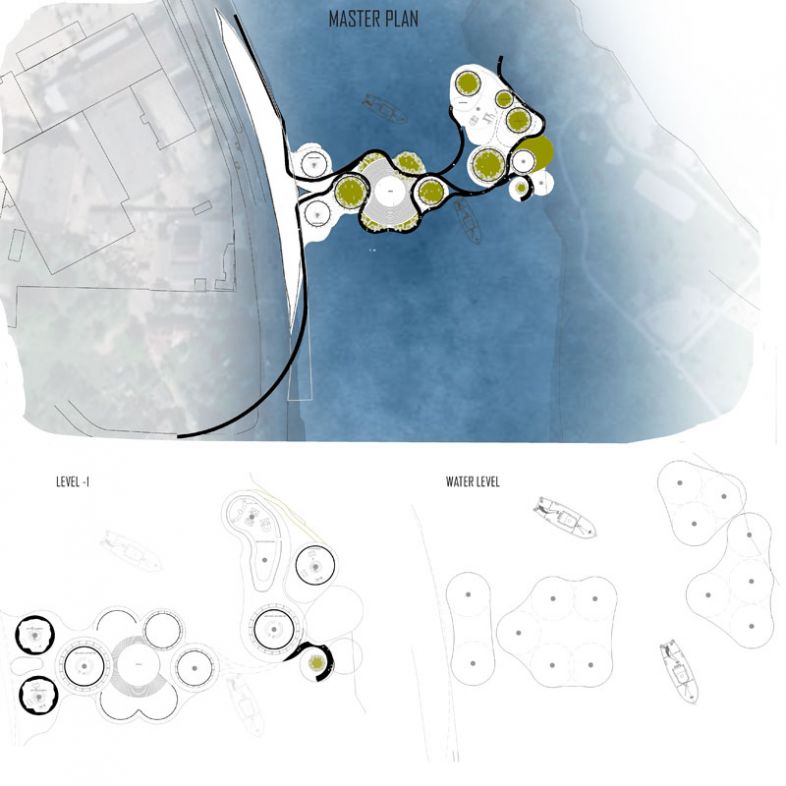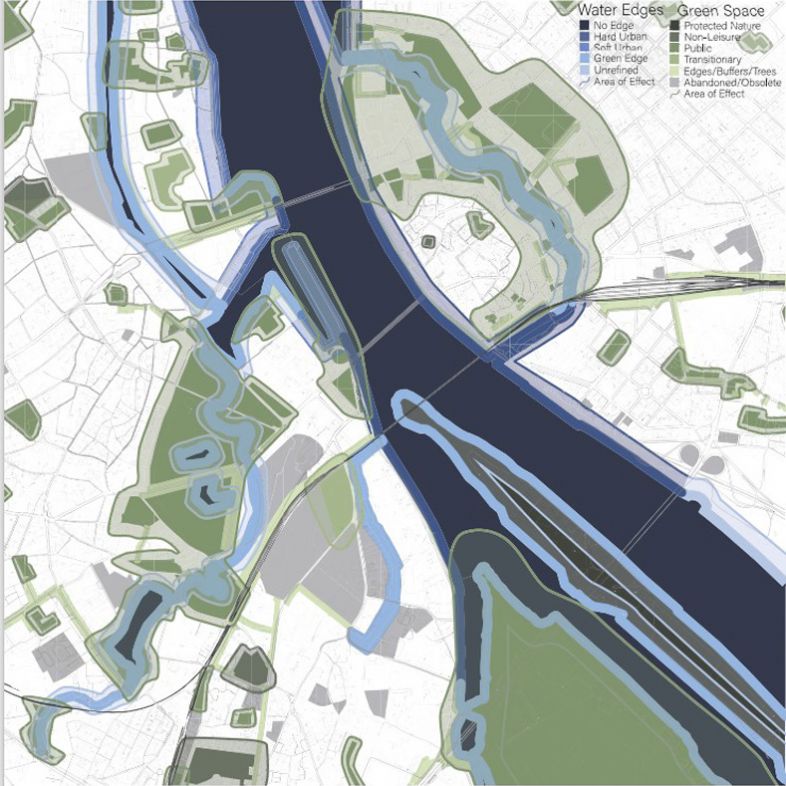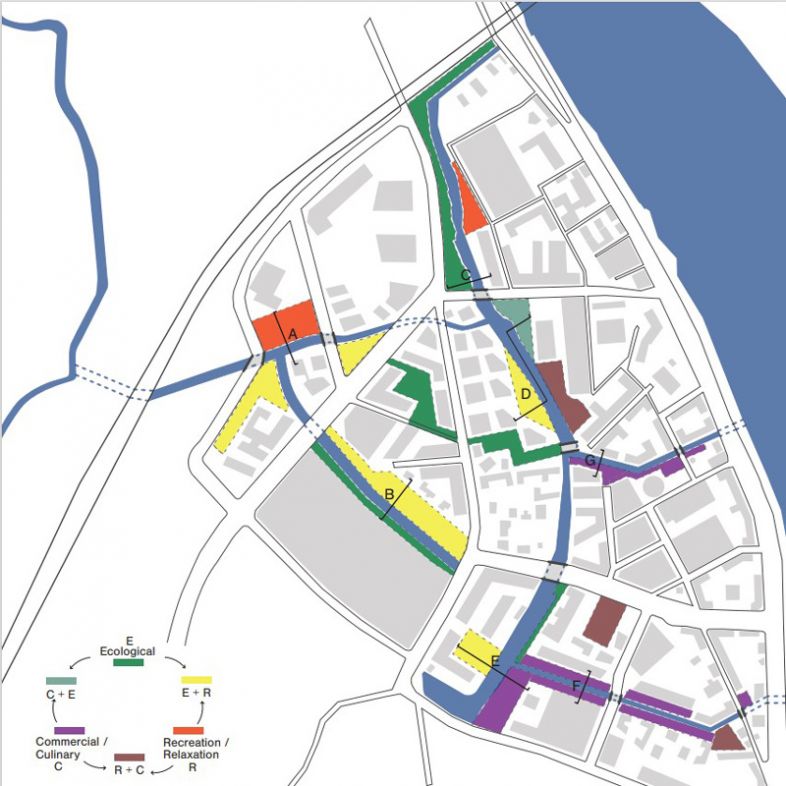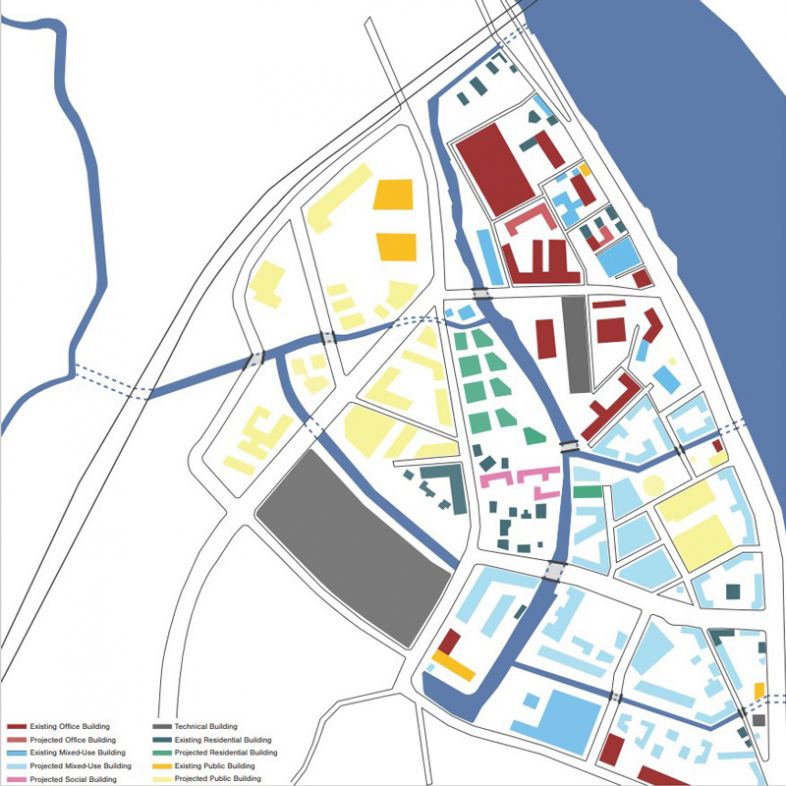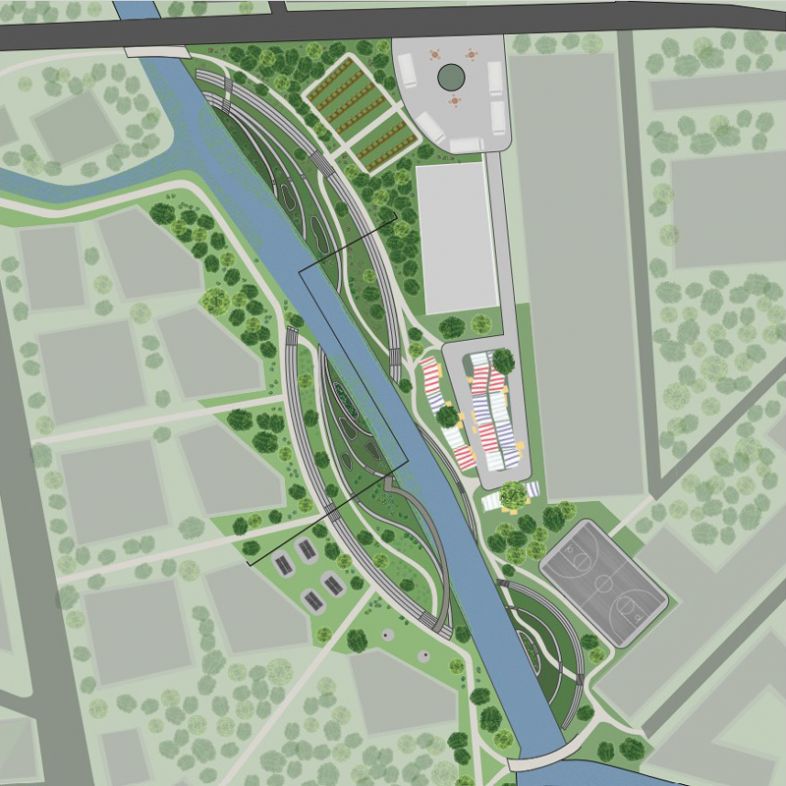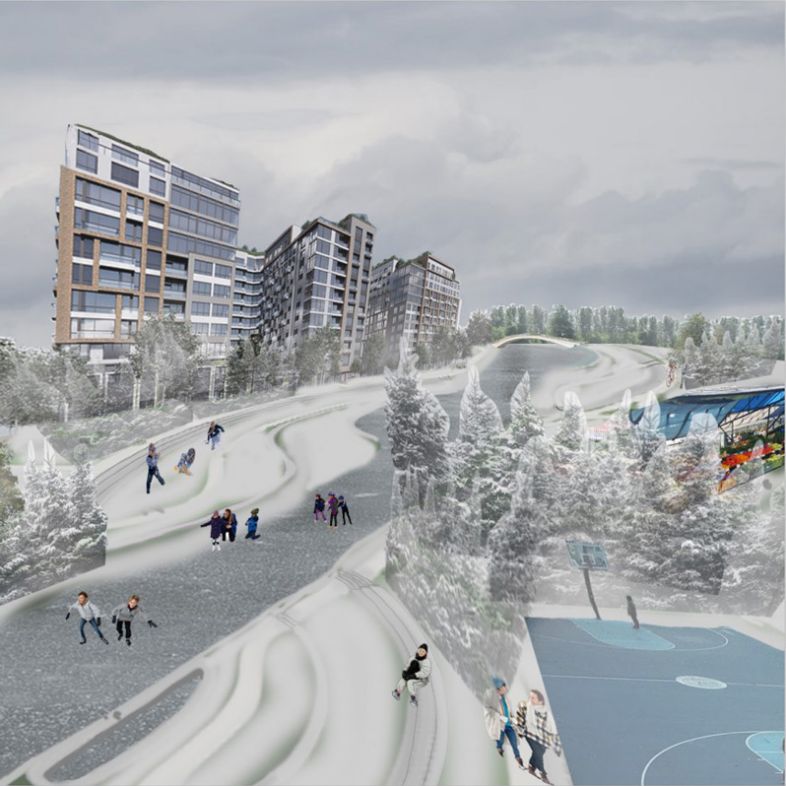Riga.BalticNetwork.
Spring.2022“Linking nations, people and places”, the greenfield high-speed rail infrastructure project Rail Baltica, aims to integrate the Baltic States (five European Union countries: Poland, Lithuania, Latvia, Estonia and indirectly also Finland) in the European rail Network. The city hubs of this transportation nodes can become engines for urban development.
This spring semester focused in Riga, Latvia. This section of the line (Upeslejas–Riga–Misa, 56km long) is not only one of the most complex sections that crosses densely populated urban areas but in addition, it links Rail Baltica International Passenger Stations in the Riga Central Station and the International Airport ‘Riga’. Riga International Airport is the largest airport in the Baltic states with direct flights to over 80 destinations in 30 countries. Students explored the urbanities around Riga Central Station and Tornakalns train stops to envision the urban impact and the emergence of new projects in the core of Latvia.
Located at either side of Daugava River, students explored the urban scale to understand the different urban conditions of the two neighbourhoods: one within the old town, the other, within green landscapes in proximity to University campus and industrial areas. In group, students looked at the existing conditions of the site and its relation to the city. Here the city was understood as layers of information that together reveal drawing and mapping qualities, which fed into the students’ own design narratives. By analysing both tangible and intangible conditions, each student developed their own brief to target specific design challenges of inserting new developments within the existing urban fabric.
Students were invited to explore their own aesthetic style throughout the course. An ongoing dialogue between two- and three-dimensional explorations that reveal unpredictable qualities to inspire their design narratives. Design proposals were multi-scalar in scope, enabling architectural propositions to respond to a larger narrative relating to the aesthetic, programmatic and socio-economic capacities of the city and its infrastructure.
Students:
Hiu Wai Chan
Jerry Chow
Chiew Yi Zheng
Roya Abboud
Christina Ibrahim
Rebecca Morgan Spratt
Rhys Wyatt Floyd
June Claire Lin
Isaac Salame Romano
Jason George Cornelison
Carl Christoph Fletcher
Tutors:
Naiara Vegara
Marie-Isabel de Monseignat-Lavrov
Katya Larina


